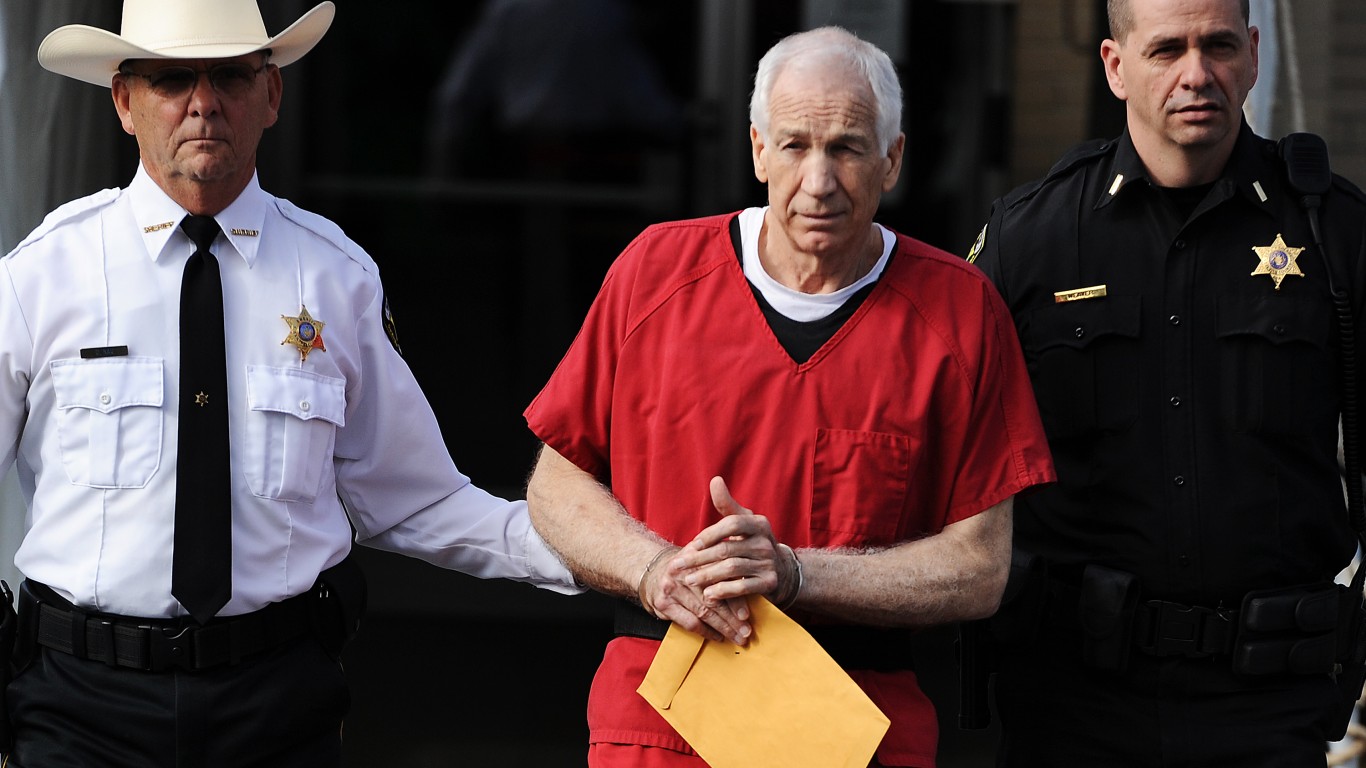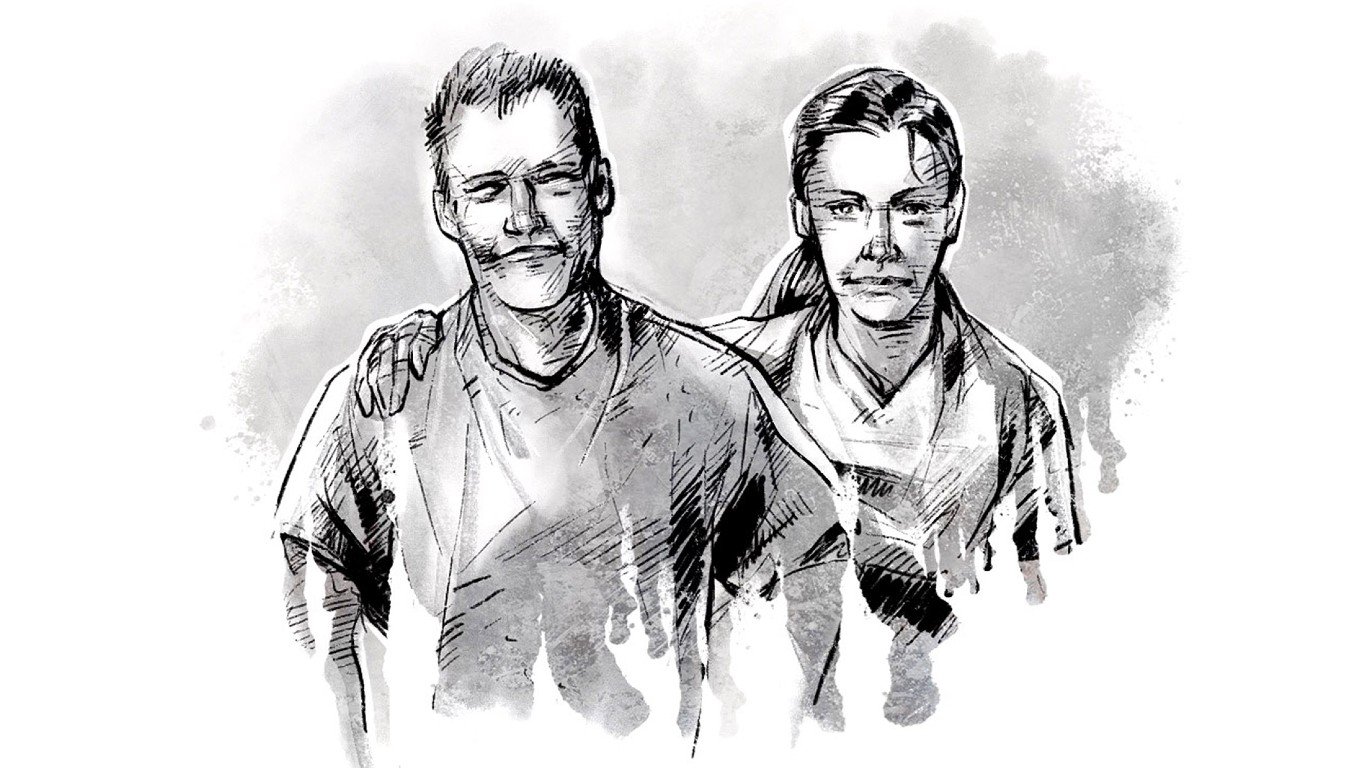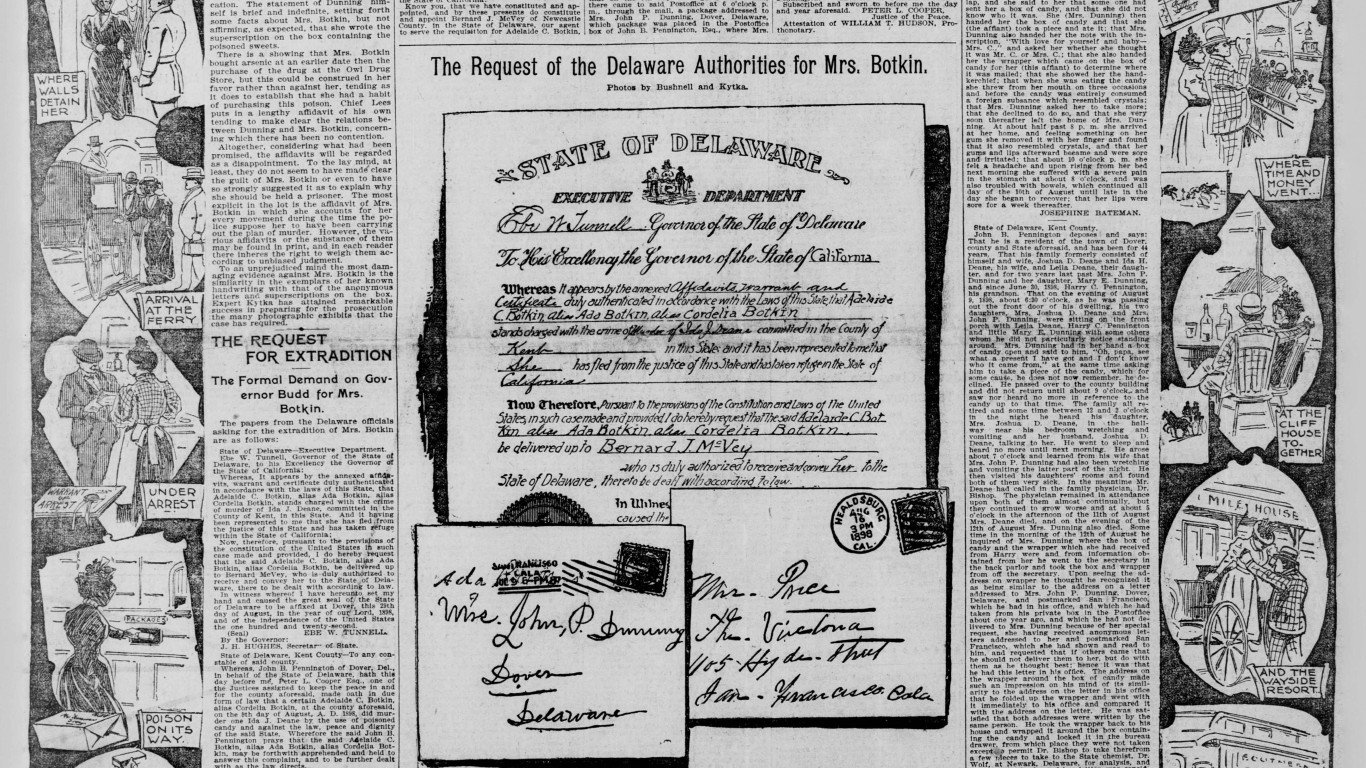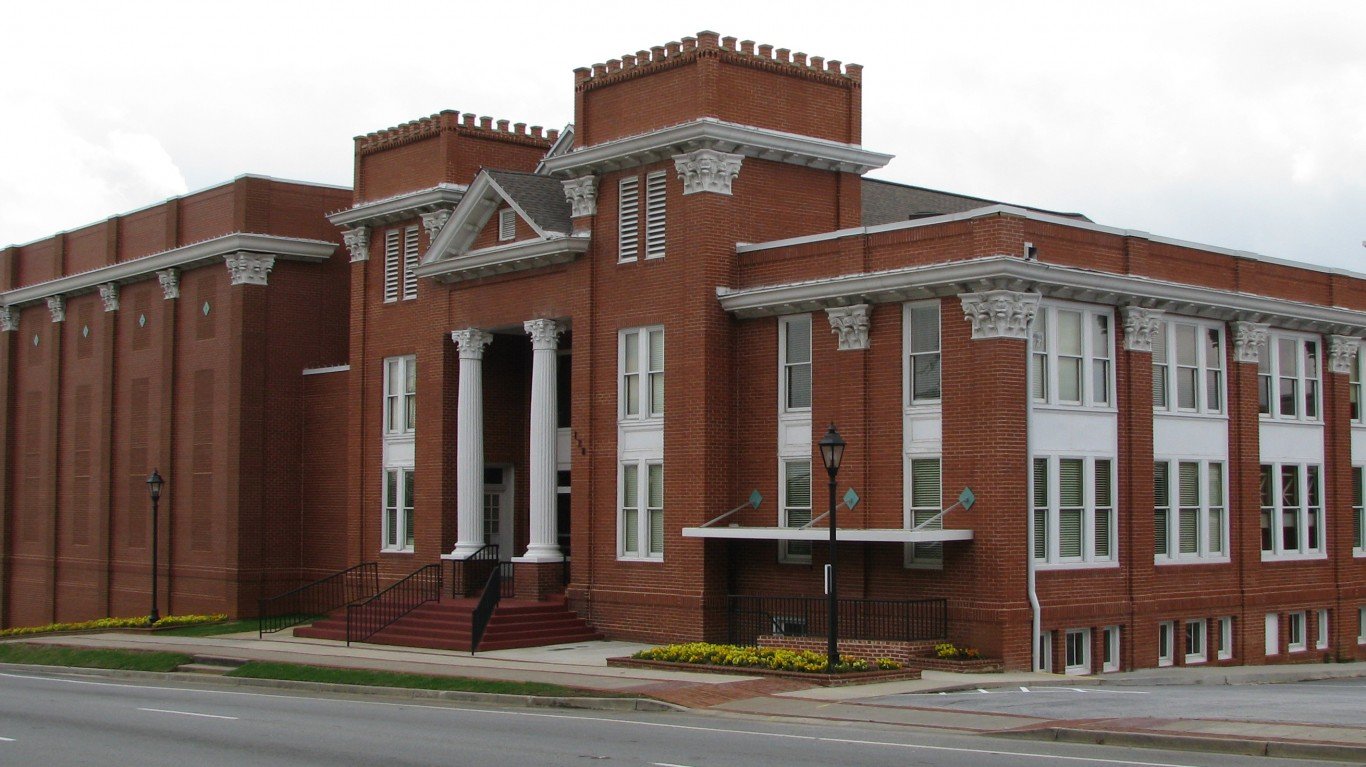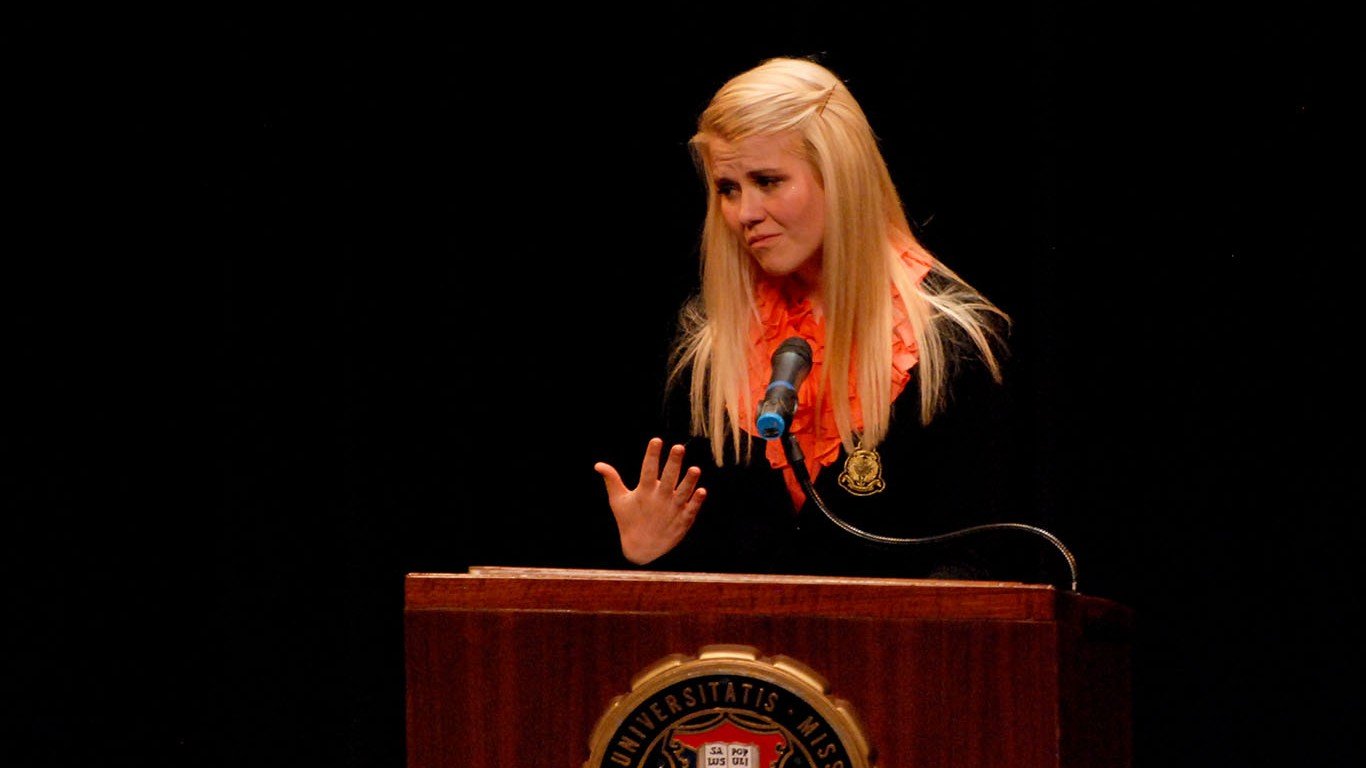Every state offers exciting cities, beautiful parks, and historic sites. But states can also be famous for other, less favorable, attributes – like shocking crimes. Sadly, each state is home to heinous felonies – murders, rapes, kidnappings, financial fraud that destroys lives, and more.
To find the most notorious crime in every state, 24/7 Tempo culled information from the FBI website and media sources such as Readers Digest, CNN, and the BBC. Because “most notorious” is a subjective judgment, we used editorial discretion to select crimes with particularly tragic or devastating impacts, most but not all of them involving loss of life. Every state, however, has been the site of many other horrible crimes as well.
Most of the crimes on this list do involve multiple murders, many by serial killers like Ted Bundy in Washington or Jeffrey Dahmer in Wisconsin, as well as two by domestic terrorists – Timothy McVeigh, executed for the bombing of the Alfred P. Murrah Federal Building in Oklahoma City that killed 168, including 19 children, and Unabomber Theodore Kaczynski, serving eight life sentences without possibility of parole for killing three people and wounding almost two dozen with explosive devices.
While most of the people listed here have been punished for their crimes, some have skated free, like Indiana’s Belle Gunness, aka “Hell’s Belle.” She left a trail of more than 40 victims beginning in the late 1880s, but escaped justice and was never found. Likewise, the killer of the so-called Black Dahlia in Los Angeles in 1947 was never identified. (Here are 22 famous unsolved crimes in America.)
But a crime doesn’t have to be a murder to be considered notorious. The collapse of Enron in Texas and the Ponzi scheme concocted by Bernie Madoff in New York ripped off millions of dollars from innocent investors and employees, a reminder of just how devastating financial misdeeds can be.
Although every untimely death is tragic, crimes can sometimes spur movements toward equal justice. The bombing of a church in Alabama that killed four young girls and the assassination of Martin Luther King, Jr. in Memphis highlighted the need for Civil Rights legislation. The killing of Matthew Shepard, a gay man in Wyoming, drew attention to the fight for LGBTQ rights.
Some crimes live on in movies and literature. The killing of a Kansas farm family inspired Truman Capote’s bestselling book “In Cold Blood” and the time of the same name. The lives and deaths of outlaws Clyde Barrow and Bonnie Parker in Louisiana were the basis for an unforgettable movie as well, often considered one of the best of all time. (These are the best movies based on real events or people.)
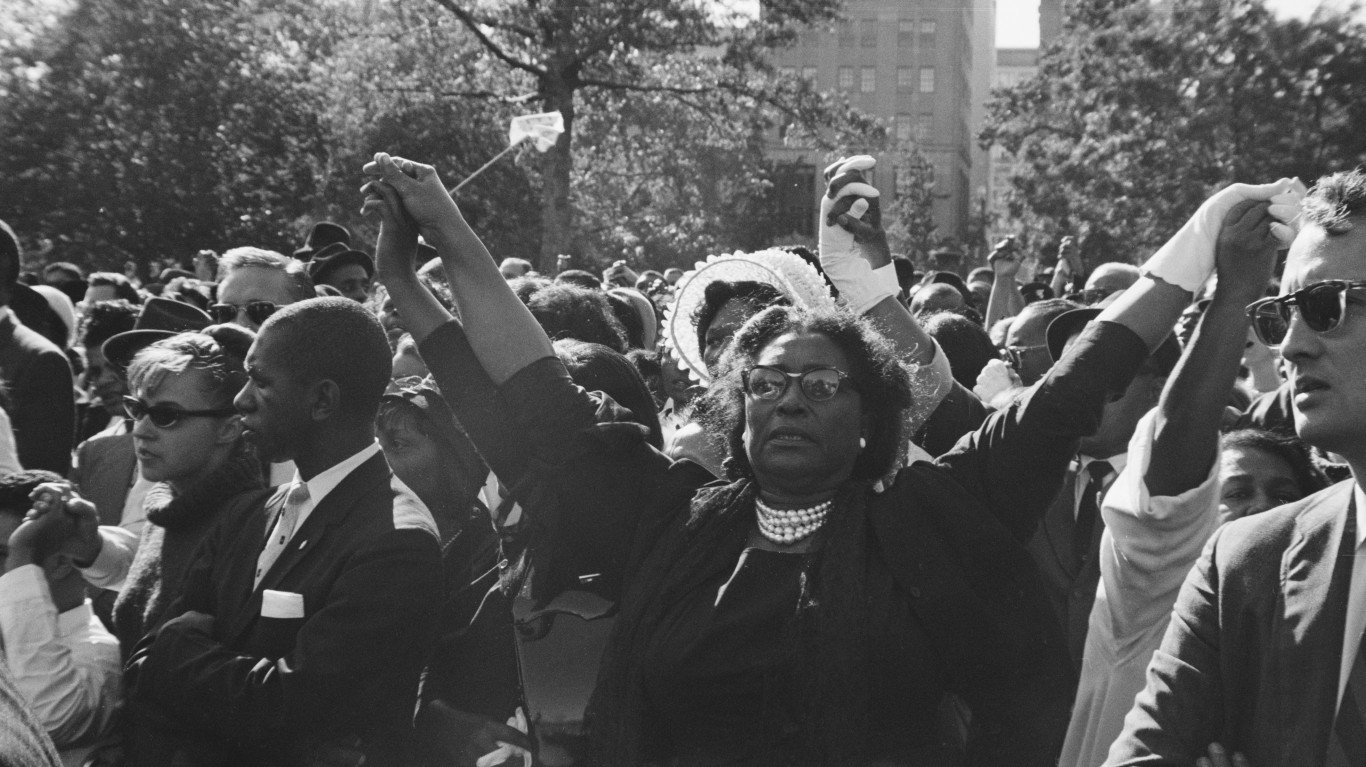
Alabama
> Crime: The 16th Street Baptist Church bombing in 1963
The battle over Civil Rights was at its height in the 1960s when members of the Klu Klux Klan bombed a church in Birmingham, Alabama, killing four young girls ages 11 to 14 and injuring more than 20 others. The Rev. Martin Luther King, Jr. spoke at the funeral for the girls. The horrific crime shocked the country and spurred on the Civil Rights movement, but the FBI closed the investigation after two years and blocked any prosecutions. The case was reopened in the late 1970s with one man, Robert Chambliss, sentenced to life in prison, and two others, Thomas Blanton and Bobby Cherry, convicted in the early 2000s. Another alleged participant, Herman Cash, died without ever being charged.

Alaska
> Crime: Robert Hansen hunting women in the Alaskan wilderness in the 1970s
In the 1970s, Alaska was the site of an oil pipeline construction boom. It was also the site of a series of grisly murders of women by baker Robert Hansen. Hansen captured the women and then hunted them down with a rifle in the Alaskan wilderness. In 1984, he confessed to killing 17 women and raping 30 more. He died in 2015 at 75 while serving a 461-year sentence for the murders. His story was made into a movie, “Frozen Ground,” starring Nicholas Cage and John Cusack.
Arizona
> Crime: Jodi Arias murdered her ex-boyfriend in 2008
When Travis Alexander was found in a pool of blood at his home in Mesa, Arizona, his ex-girlfriend Jodi Arias was soon fingered as a suspect. Although she claimed self-defense, Arias was charged and convicted of first degree murder in 2013. However, the jury deadlocked on whether to give her the death penalty. A second jury couldn’t come to a decision on a penalty either, and a judge imposed a life sentence without the possibility of parole after 25 years. She’s currently serving her term in a state prison in Arizona.
Arkansas
> Crime: The West Memphis murders in 1994
When three second-graders were found bound and mutilated in a pond, suspicion fell on three supposed “Satan worshippers” – Jessie Misskelley, Damon Echols, and Jason Baldwin. Called the West Memphis Three,” the teens were convicted, with Echols receiving the death penalty (never carried out) and the other men sentenced to life imprisonment. But in 2007, DNA evidence indicated the men had no connection to the crime. Sketchy eyewitness testimony and contested confessions further cast doubt on their guilt. In 2011, the men entered Alford pleas, a rare legal maneuver in which they asserted their innocence but admitted the prosecutors had enough evidence to convict them. They were released after serving 18 years in jail.
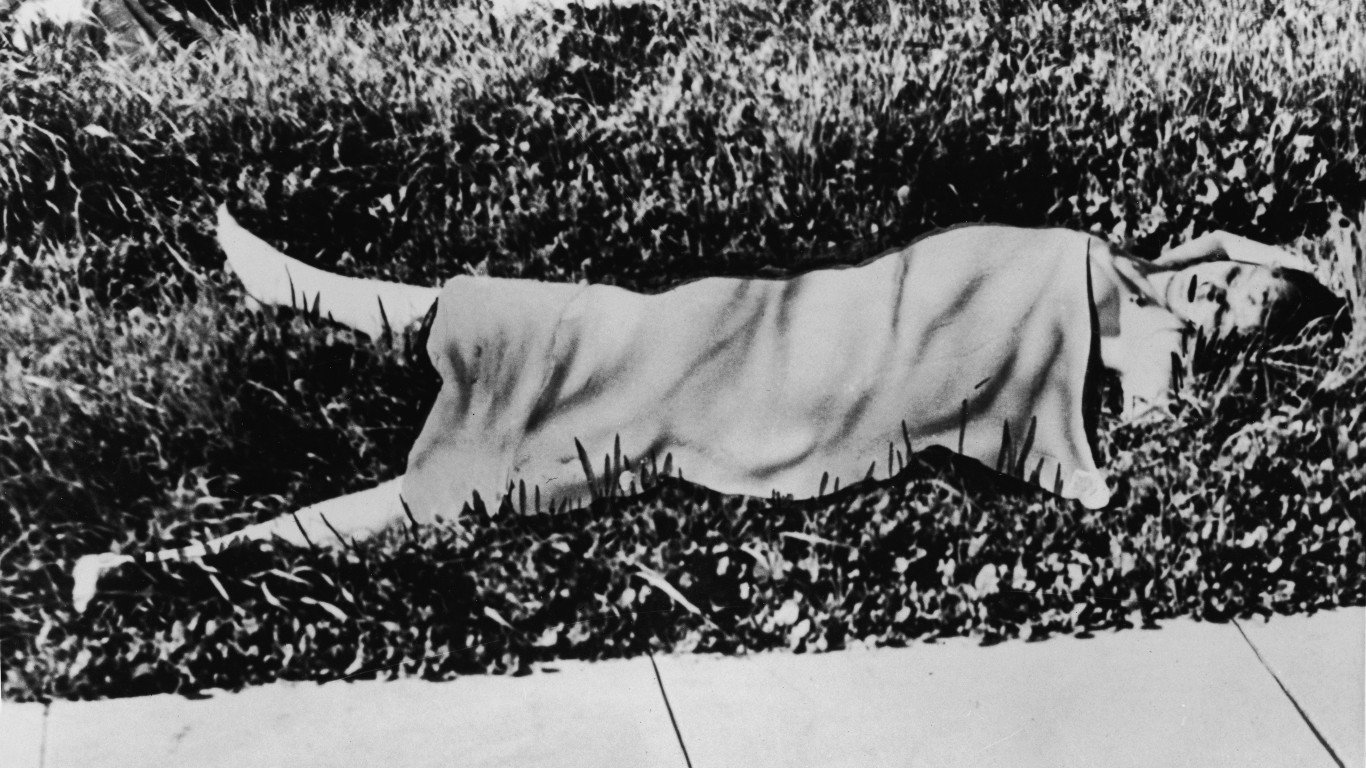
California
> Crime: Black Dahlia murder in 1947
When the body, severed at the waist, of aspiring actress Elizabeth Short was found in Los Angeles, police and the FBI began an intense hunt for the killer. The victim was quickly dubbed the “Black Dahlia,” possibly for her dark clothing and as a reference to “The Blue Dahlia,” a movie in theaters the previous year. Despite tantalizing some leads, including fingerprints found on an anonymous letter possibly sent by the killer (the prints didn’t match anyone in the FBI’s files), the case of the Black Dahlia has yet to be solved.

Colorado
> Crime: Columbine High School massacre in 1999
On April 20, 1999, Dylan Klebold and Eric Harris entered Columbine High School and gunned down 12 students and one teacher and wounded more than 20 others in what was then the worst school shooting in U.S. history. The shooting spree ended when Klebold and Harris took their own lives. Although a motive was never determined, investigators learned both teens had planned to bomb the school in an attack like the Oklahoma City bombing in 1995. The victims obtained some measure of justice when Mark Manes, the man who had sold the gun and ammunition to Harris, was sentenced to six years in prison.

Connecticut
> Crime: Sandy Hook massacre in 2012
Eleven days before Christmas, 20-year-old Adam Lanza strode into Sandy Hook Elementary School and killed 20 first graders and six adult staffers. Lanza killed his mother before the school shootings, and it was later learned he had a history of mental illness. Before police could capture him, Lanza killed himself. The senseless crime kicked off a debate on gun safety that continues today.
Delaware
> Crime: Arsenic poisonings committed by Cordelia Botkin in 1898
John Preston Dunning cheated on his wife with several women. When he broke it off with Cordelia Botkin, whom he had met in San Francisco, to return to his wife, Mary, in Delaware, the spurned other woman didn’t take too kindly to the rejection. Botkin sent a box of poisoned chocolates to Mary that killed her and her sister. When police found a piece of string in her hotel room that had been cut so she could fill the box of candies laced with arsenic, Botkin’s fate was sealed. She was found guilty and sentenced to the women’s prison ward at San Quentin. She died in 1910.
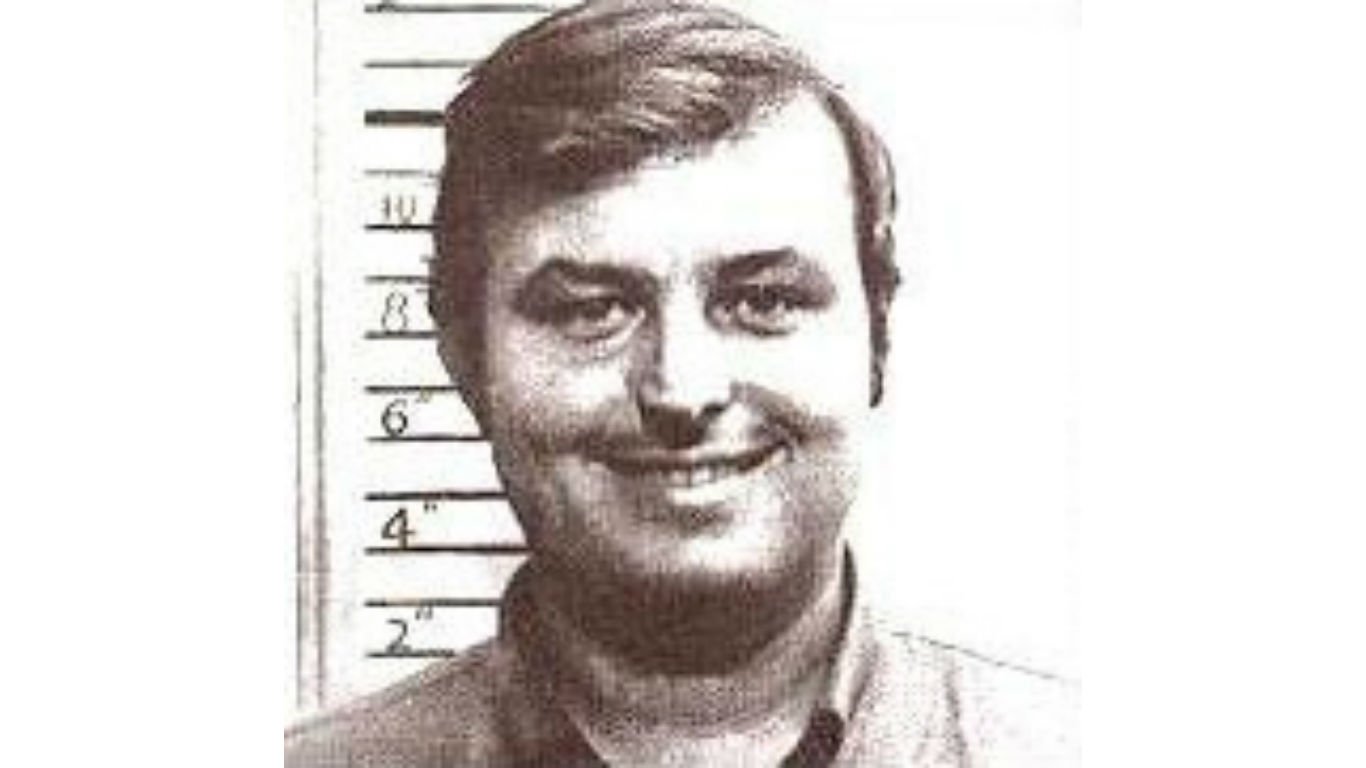
Florida
> Crime: Gerard John Schaefer killing women and teenage girls from 1969 to 1973
Gerard John Schaefer was a sheriff’s deputy, gaining his job with a forged letter of recommendation, when he abducted two teenage girls, tied them to trees, and threatened to rape and murder them. He was called back to the station, though, where he told officers that he had tied the girls up to teach them a lesson. They were rescued and Schaefer was sentenced to a year in jail in December 1972. Earlier that year, though, another two teenage girls hadn’t so lucky. Though their bodies weren’t discovered until April 1973, 16-year-old Georgia Jessup and 17-year-old Susan Price had been bound and butchered by Schaefer the previous September. He was eventually arrested and convicted of the murders, but he was also linked to at least nine other murders and disappearances and perhaps as many as 28. Given a life sentence for the Jessup and Price killings, Schaefer was stabbed to death in prison by another inmate at age 49.
Georgia
> Crime: Murder of 10-year-old Emani Moss in 2013
The death of 10-year-old Emani Moss shocked the public and even brought hardened police officers to tears. After the body of the little girl was found burned in a trash bag, her father and stepmother, Eman Moss and Tiffany Moss, were charged with murder and child abuse. The couple had literally starved the child to death and incinerated her body to cover their crime. Eman Moss accepted a plea deal to escape the death penalty and was sentenced to life without parole. In 2019, Tiffany Moss was given the death penalty for the murder of her step-daughter.

Hawaii
> Crime: Xerox murders of 1999
Hawaii is renowned for its beaches and tranquil lifestyle. But the Aloha State was stunned in 1999 when Byran Uyesugi walked into his workplace at Xerox and shot and killed seven people and wounded another. The disgruntled employee was said to be suffering from work-related stress. Convicted of seven counts of first-degree murder and second degree attempted murder, Uyesugi is currently serving a life sentence in prison

Idaho
> Crime: Joseph Duncan III murdering two adults and two children in 2005
Convicted child molester Joseph Duncan III murdered 13-year-old Slade Groene; his mother, Brenda; and the mother’s boyfriend, Mark McKenzie, at the Groene home outside Coeur d’Alene, and abducted two other Groene children, eight-year-old Shasta and nine-year-old Dylan. Dylan’s body was subsequently found in Lolo National Forest in Montana, but Shasta was discovered with Duncan, who claimed he was returning her to her father because he’d decided not to kill her. Although Duncan received the death penalty for his crimes, he died of brain cancer in 2021 before he could be executed.
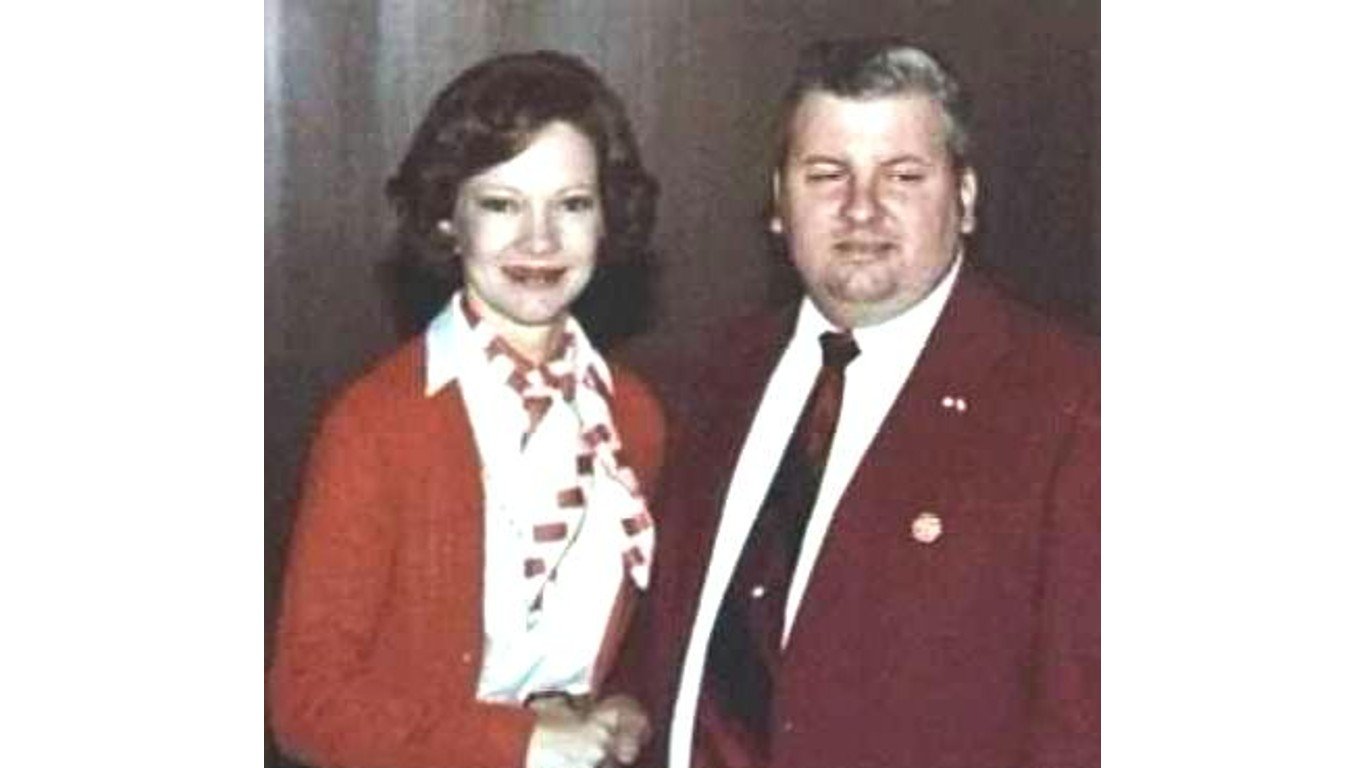
Illinois
> Crime: The Killer Clown’s crimes between 1972 and 1978
John Wayne Gacy was known in his suburban Chicago town for performing as a clown at children’s parties – but his costume hid his sinister double life as a serial killer. In the 1970s, he was convicted of killing 33 boys and young men. He had been previously convicted and jailed for the sexual assault of a teenage boy. After his murder spree was uncovered, Gacy was convicted of murder and executed by lethal injection in 1994.

Indiana
> Crime: “Hell’s Belle” killed perspective suitors and her children between 1884 and 1908
Belle Gunness, aka “Hell’s Belle,” immigrated to America in 1881 from Norway to find wealth. She found it, through schemes to collect insurance claims via mysterious fires and deaths, including those of her two husbands and her children. She also lured other men to her farmhouse by posting advertisements seeking suitors, but they were never seen again. When relatives began to ask questions, her farmhouse burned down, with workers uncovering the bodies of 40 victims, including chidren. A hired hand at the farm was arrested for murder and arson. He was convicted of arson, but not murder. Before he died in prison, he told police about Belle’s crimes and said the body found in the burned building was not hers. Belle had in fact planned the perfect getaway and skipped town with a stash of money from her bank accounts. She was never found and it is not known how and when she died.
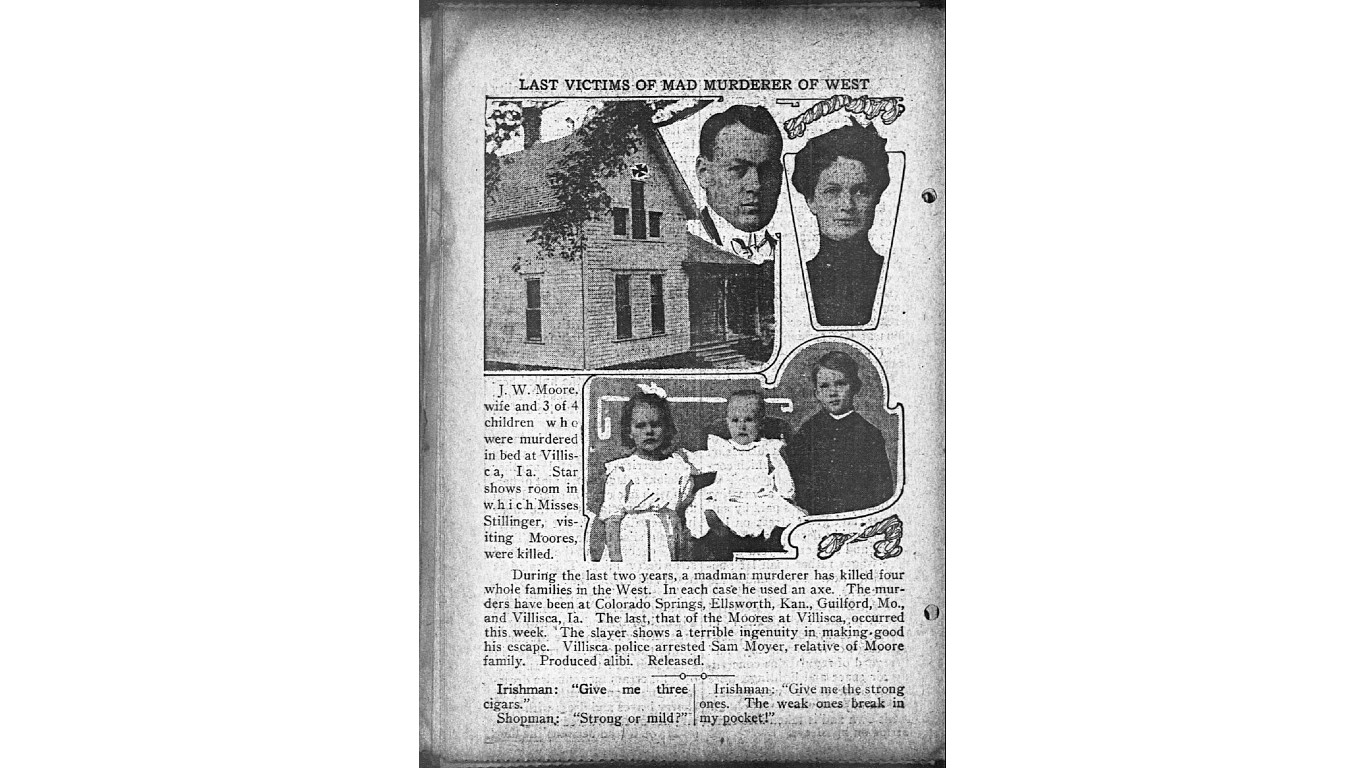
Iowa
> Crime: Villisca Axe Murders of 1912
After eight people were found bludgeoned to death in their beds with the blunt end of an ax in the town of Villisca, Iowa, suspicion fell on numerous suspects – chief among them Rev. Lyn George Jacklin Kelly. After leaving town on an early train the morning the murders were discovered, he wrote letters to law enforcement officials and family members of the deceased mentioning details of the crime that had not been made public. In 1917, he was arrested for the crime and confessed. He later recanted, and was acquitted at two separate trials. No one else was ever tried for the killings.
Kansas
> Crime: “In Cold Blood” Clutter family murders of 1959
A peaceful town in rural Kansas was the site of one of the country’s most horrific crimes. Parolees Eugene Hickock and Perry Smith were looking for money when they broke into the home of Herbert Clutter, a farmer and community leader in Holcomb. Hickock and Smith savagely killed Herbert; his wife, Bonnie Mae Fox; and their children, 15-year-old Kenyon and 16-year-old Nancy. Both men confessed to the crime, and were later executed. Truman Capote wrote about the murders in one of the great works of crime literature, “In Cold Blood,” made into a movie in 1967.
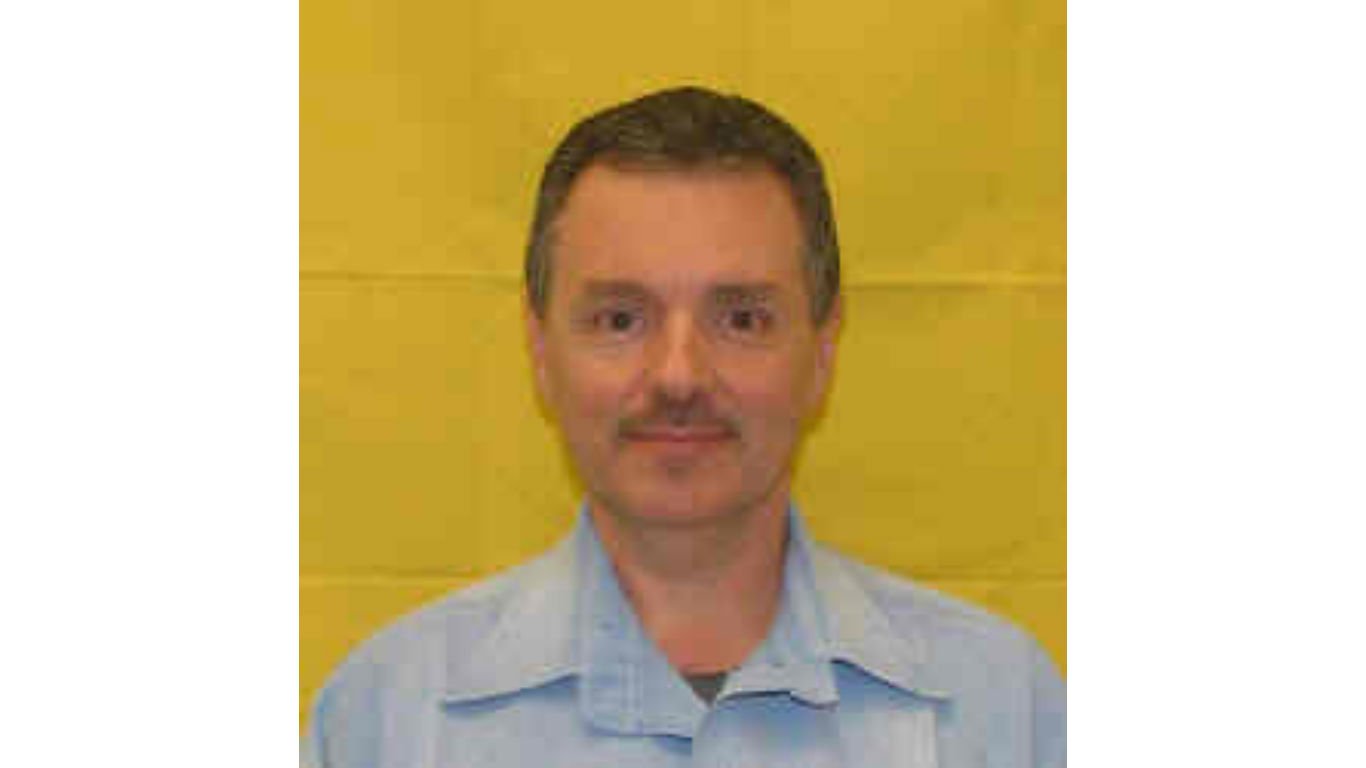
Kentucky
> Crime: “Angel of Death” Donald Harvey killing hospital patients between 1970 and 1987
Working as a hospital orderly at a hospital in the Kentucky town of London, Donald Harvey was anything but a healer. Over a 10-month period, he killed at least 12 patients at Marymount Hospital, and later claimed to have killed 87 more. Although it took two decades, Harvey was eventually convicted and sentenced for his crimes in 1987. He died in prison in 2017.
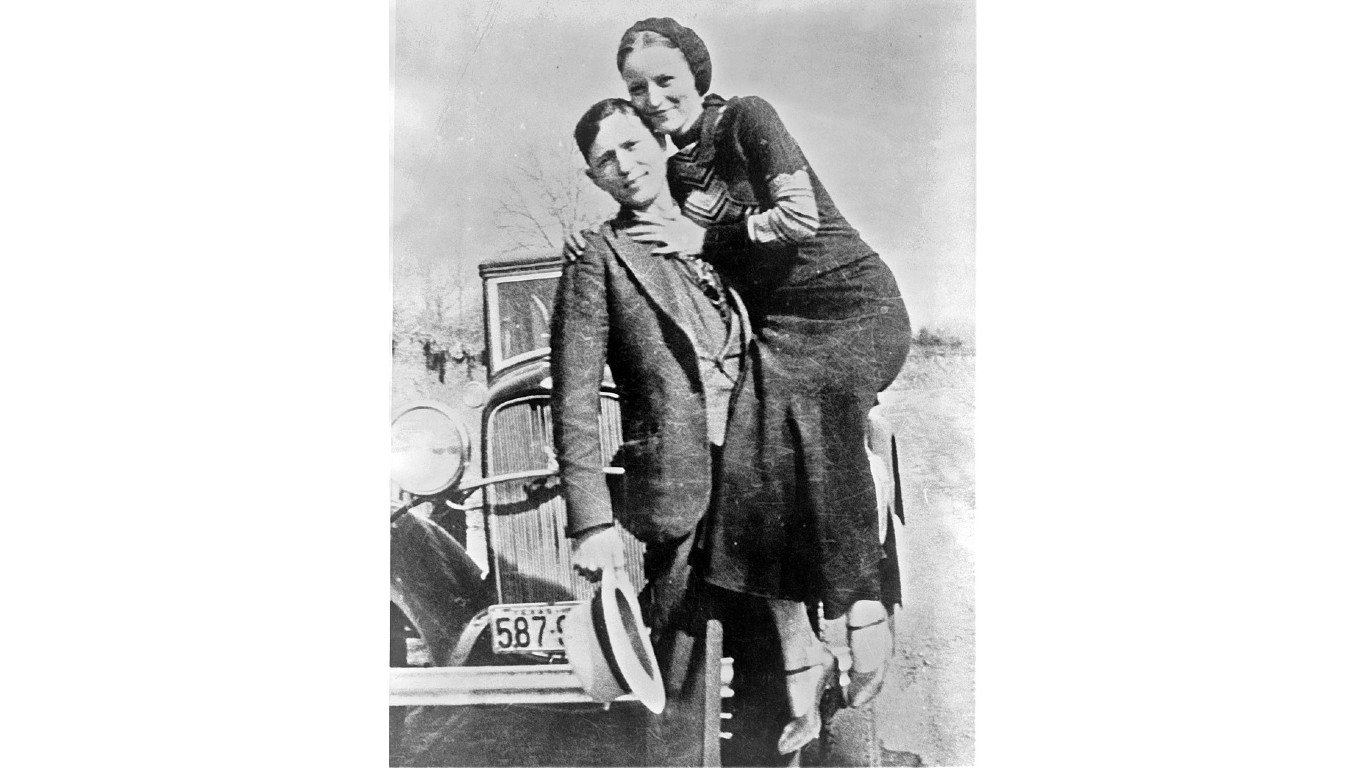
Louisiana
> Crime: Bonnie & Clyde crime spree between 1932 and 1934
During the Depression era, lovers and crime partners Bonnie Parker and Clyde Barrow fascinated the public. In reality, though, they were cold-blooded killers who murdered at least 13 people, including law enforcement officers. Their crimes caught up to them in a shootout in Louisiana when both were killed in a hail of gunfire. Their legend lives on in books and movies, including 1967’s “Bonnie and Clyde.”

Maine
> Crime: The Black Bear B&B murders of 2006
Christian Charles Nielsen, a cook at the Sudbury Inn in Bethel, shot the live-in handyman at the Black Bear Bed & Breakfast in nearby Newry, where he was lodging. The next day, he murdered innkeeper Julie Bullard, and the following day dispatched the innkeeper’s daughter and one of her friends – and even killed three dogs that lived on the property. He burned the handyman’s body and dumped it in the woods about 15 miles away, but dismembered the other bodies and left them, along with the dogs, outside the Black Bear. When Nielsen’s father arrived at the B&B after the killings, he discovered those bodies and told police he thought his son was responsible. After Nielsen was arrested, he told police he had had no motive for the crime, but had been thinking about killing people for years. He is serving a life sentence in Maine State Prison.
Maryland
> Crime: The Labor Day rampage of 1990
Between Aug. 29 and Sept. 1, John Thanos killed three teenagers with a sawed-off semi-automatic rifle. One was a hitchhiker he picked up and the others were a gas station attendant and his girlfriend. Found guilty of the crimes, the hardened killer was killed by lethal injection in 1994, the first person executed in the Maryland Penitentiary in 33 years. Unrepentant, Thanos taunted the families of the victims at his trial and claimed that he wished he could dig up their bodies and defile them. As he was about to be executed, he reportedly said “Get on with it.”
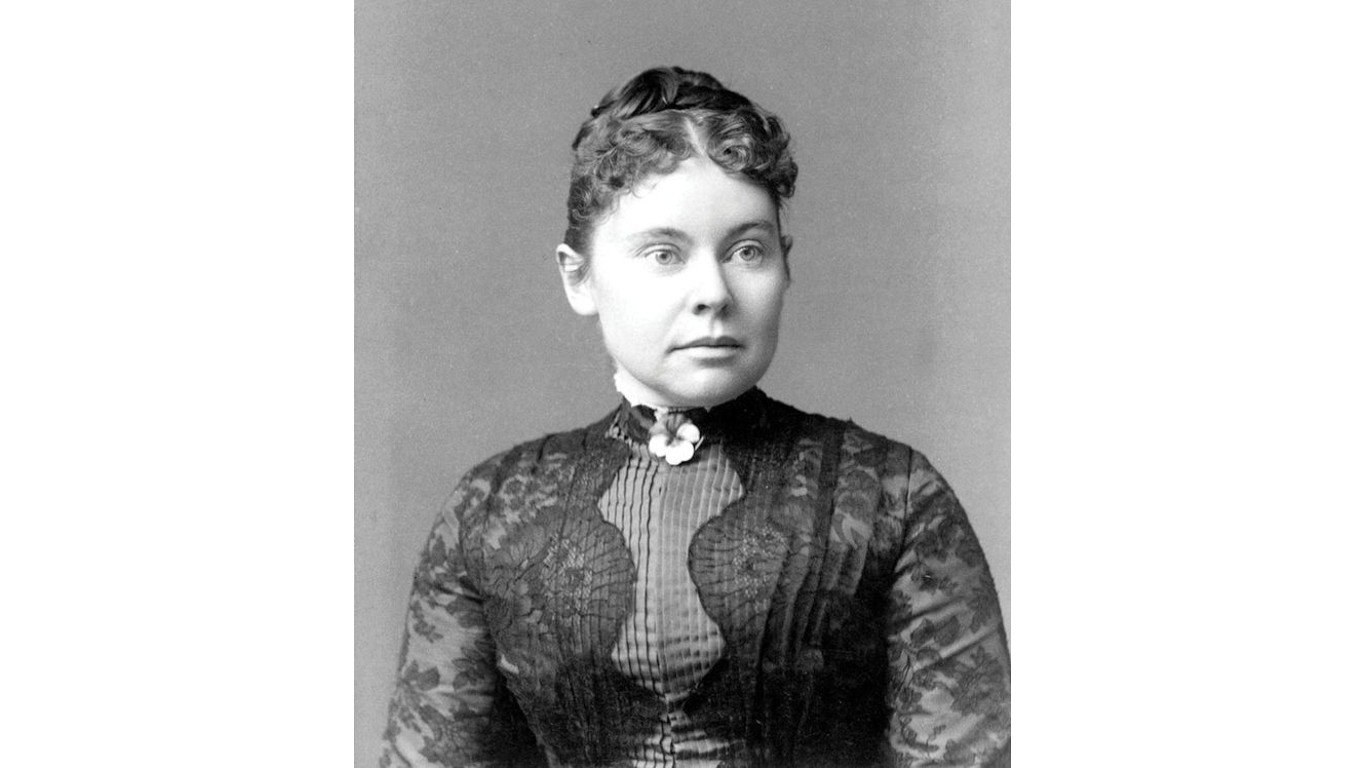
Massachusetts
> Crime: Murder of Lizzie Borden’s father and stepmother in 1892
“Lizzie Borden took an ax/And gave her mother 40 whacks/When she saw what she had done/She gave her father 41.” The popular rhyme sums up the brutal hatchet murders of Andrew Borden and Abby Borden, the father and step-mother of Lizzie Borden. Police found no clues as to who committed the crimes, but arrested Lizzie based on circumstantial evidence. She was acquitted by a jury, but the people in her town still held her responsible. The home where the Bordens lived is now a tourist attraction.
Michigan
> Crime: Navy vet raping and strangling women between 1992 and 1999
To his neighbors in Dearborn Heights, John Eric Armstrong was a Navy vet and devoted father. Yet the supposed gentle giant – he weighed more than 300 pounds – never got over a breakup with his high school girlfriend. Possibly to avenge the rejection, he started raping and murdering sex workers while he was in the Navy, starting when he was just 17 and claiming victims across four states and several Asian countries. He was arrested in 2000 and convicted of killing five women, but may have murdered at least six others. He is serving a life sentence in prison.

Minnesota
> Crime: Tom Petters’ Ponzi scheme between 1998 and 2008
Criminals do harm not just by inflicting physical pain. Financial crimes can be just as devastating, like the $3.65-billion Ponzi scheme run by Minnesotan Tom Petters. Among other ill effects, his financial machinations led to the bankruptcy of Minneapolis-based Sun Country Airlines, which had been relying on a loan from the Petters Group, and to the shuttering by regulators of the First Regional Bank in Los Angeles, which facilitated Petters’ schemes. The fact Petters gave much of his criminal gains to charity didn’t absolve him. He’s currently serving a 50-year sentence in Leavenworth.
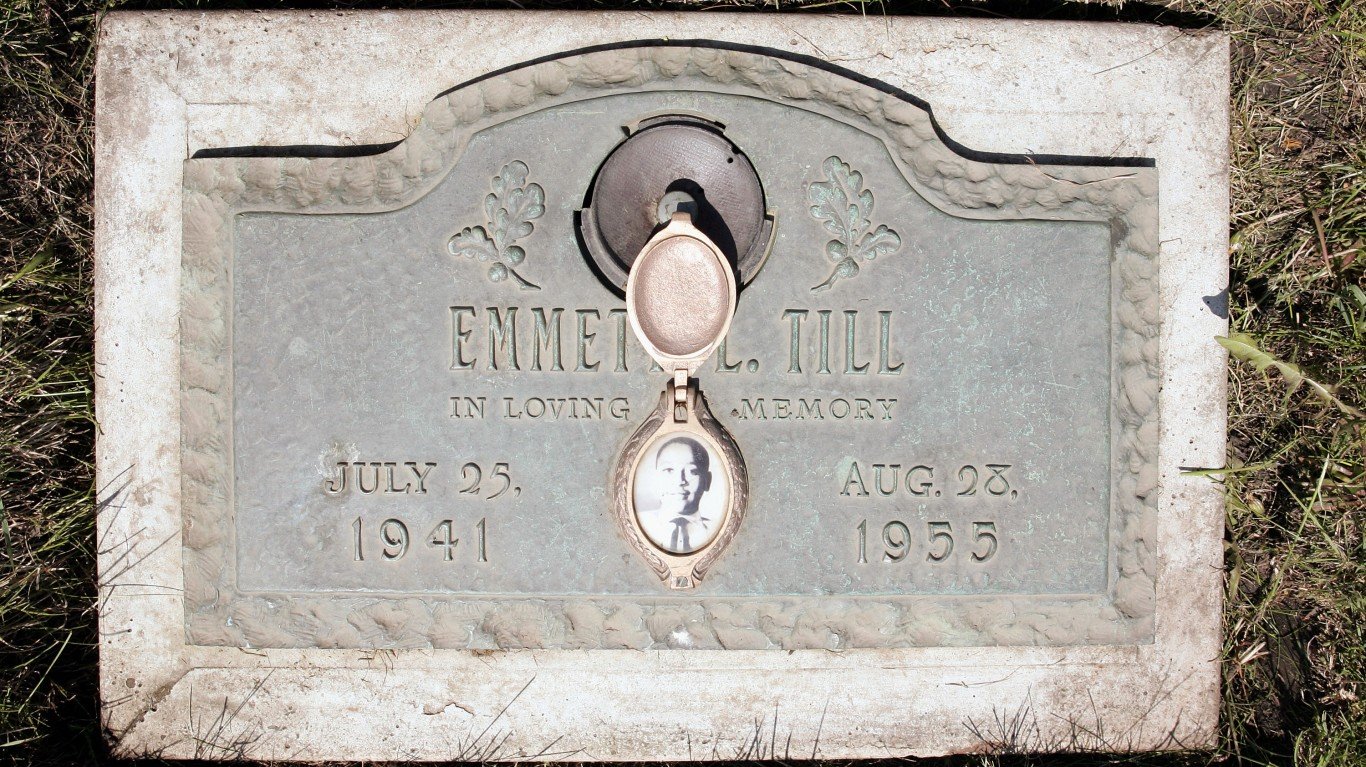
Mississippi
> Crime: Murder of Emmett Till in 1955
Fourteen-year-old Emmett Till, an African-American, was visiting relatives in Mississippi when he stepped into a store owned by Roy and Carolyn Bryant. The young man was accused of whistling at Carolyn, a white woman, an act that infuriated Roy. He and his brother, J.W. Milam, kidnapped Till, shot him in the head, and dumped his body in the Tallahatchie River. Roy Bryant and Milam were arrested and charged, but were acquitted by an all-white jury. The two men later admitted they committed the crime, but because they couldn’t be tried for the same crime after an acquittal, they were never punished for Till’s murder. The horrific crime helped galvanize the Civil Rights Movement. Carolyn subsequently admitted that her allegations against Till were false.
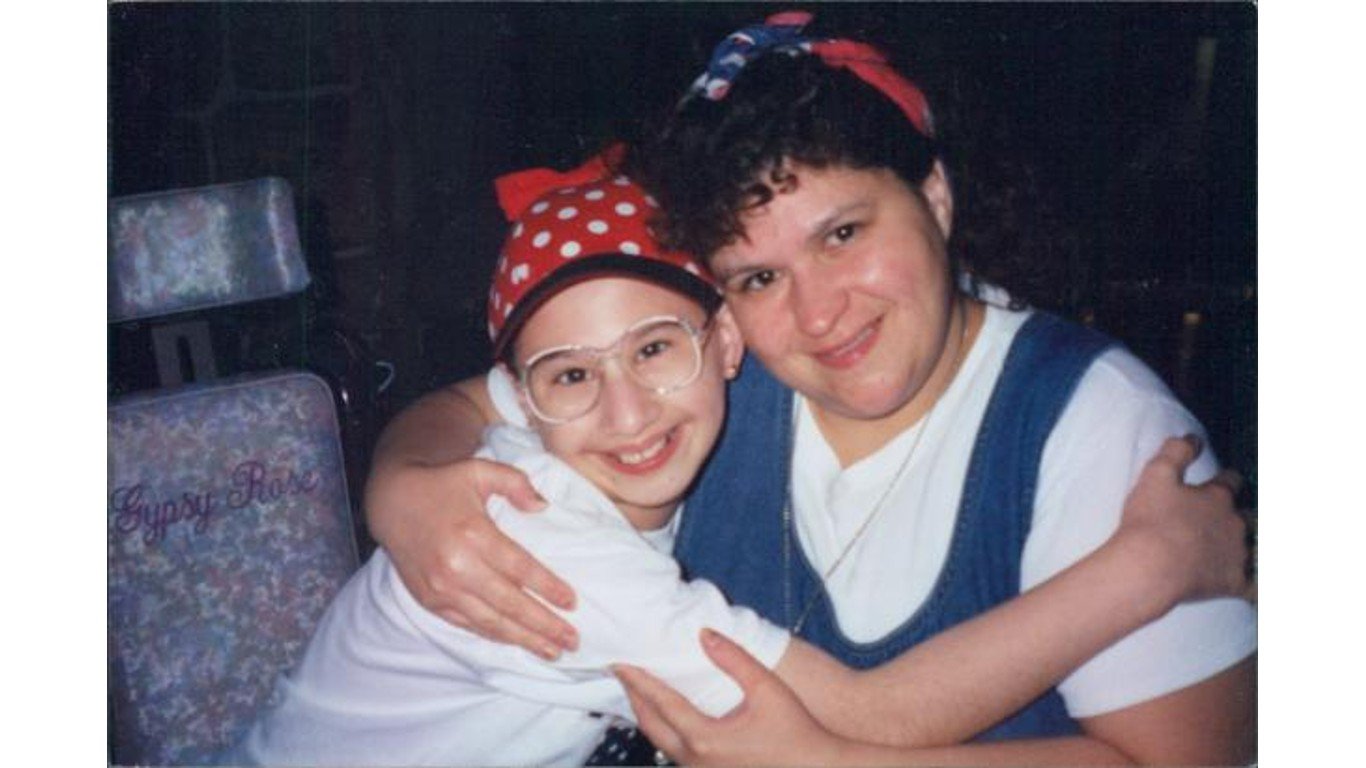
Missouri
> Crime: Gypsy Rose Blanchard convincing her online boyfriend to kill her mother in 2015
Dee Dee Blanchard appeared to be a caring mother to her disabled daughter, Gypsy Rose. In reality, Dee Dee suffered from Munchausen’s by proxy, a disease that makes parents subject their children to abuse so they appear sick in order to get attention. After years of abuse, Gypsy Rose and her boyfriend murdered her mother. Although public opinion turned in her favor after the years of abuse were detailed, Gypsy Rose pled guilty to second degree murder and is currently serving a 10-year sentence in Missouri’s Chillicothe Correctional Center. She will be eligible for parole next year at age 32.
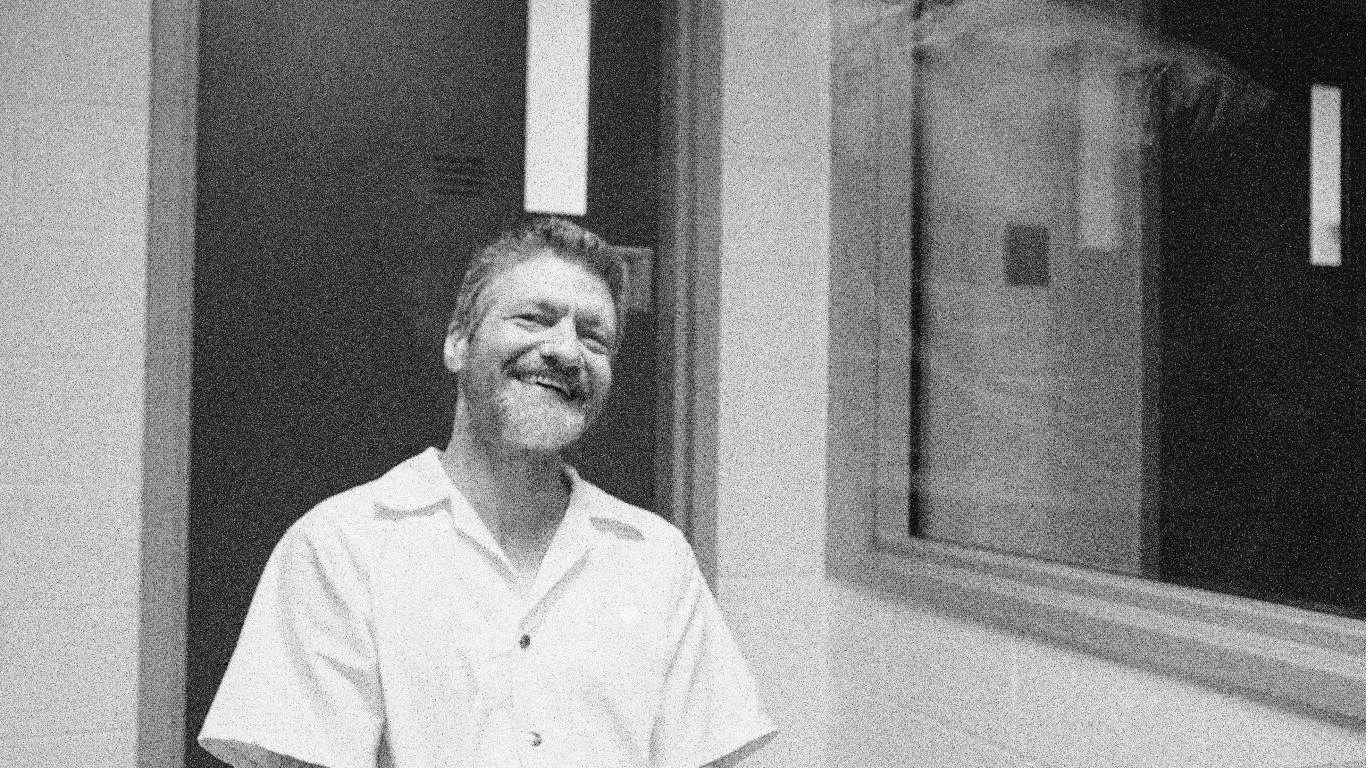
Montana
> Crime: Unabomber’s series of attacks between 1978 and 1995
Theodore Kaczynski began mailing untraceable explosive devices in 1978. Over the next 17 years, he sent or delivered bombs to university professors and others he disdained for crimes against the environment or for developing modern technology, killing three and wounding nearly two dozen. Termed the Unabomber, Kaczynski eluded the FBI for years until his brother, David, identified his brother’s writings in a manifesto published in the Washington Post. That led authorities to an isolated cabin in Montana where Kaczynski lived. The Unabomber pled guilty and is now serving eight life sentences without possibility of parole.
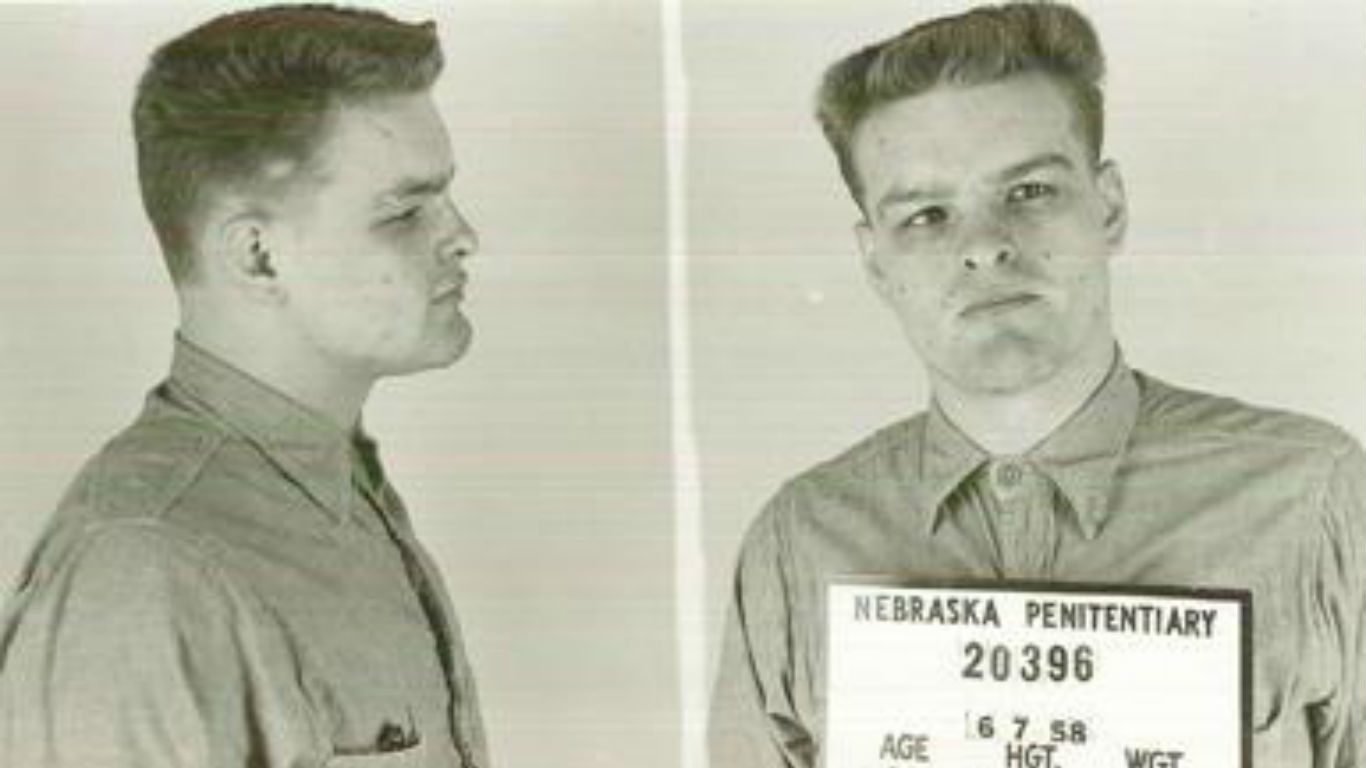
Nebraska
> Crime: Murder spree by Charlie Starkweather and Caril Fugate’s in 1958
Caril Ann Fugate was just 14 when she and her 18-yearâold boyfriend, Charles Starkweather, went on a two-month killing spree through Nebraska and Wyoming. In all, they murdered 11 people, including Fugate’s mother, stepfather, and baby half-sister. Caril Ann claimed that Starkweather held her hostage, but a jury nevertheless convicted her and sentenced her to life in prison. Starkweather was executed in the electric chair. After serving 17 years, Fugate was paroled and to this day maintains her innocence. The story of Fugate and Starkweather was the basis for the movies, “Badlands” and “Natural Born Killers.”

Nevada
> Crime: Las Vegas mass shooting in 2017
It was a starry night in Las Vegas and 22,000 concertgoers were enjoying an outdoor music show by Jason Aldean. That all changed when 64-year-old Nevada resident Stephen Paddock began firing at the audience from a window on the 32nd floor of the nearby Mandalay Bay Hotel. When the shooting stopped, at least 59 were dead and 527 others injured. Paddock killed himself as police rushed into his room at the hotel where 10 guns were stored. No motive has yet been uncovered for his heinous act.
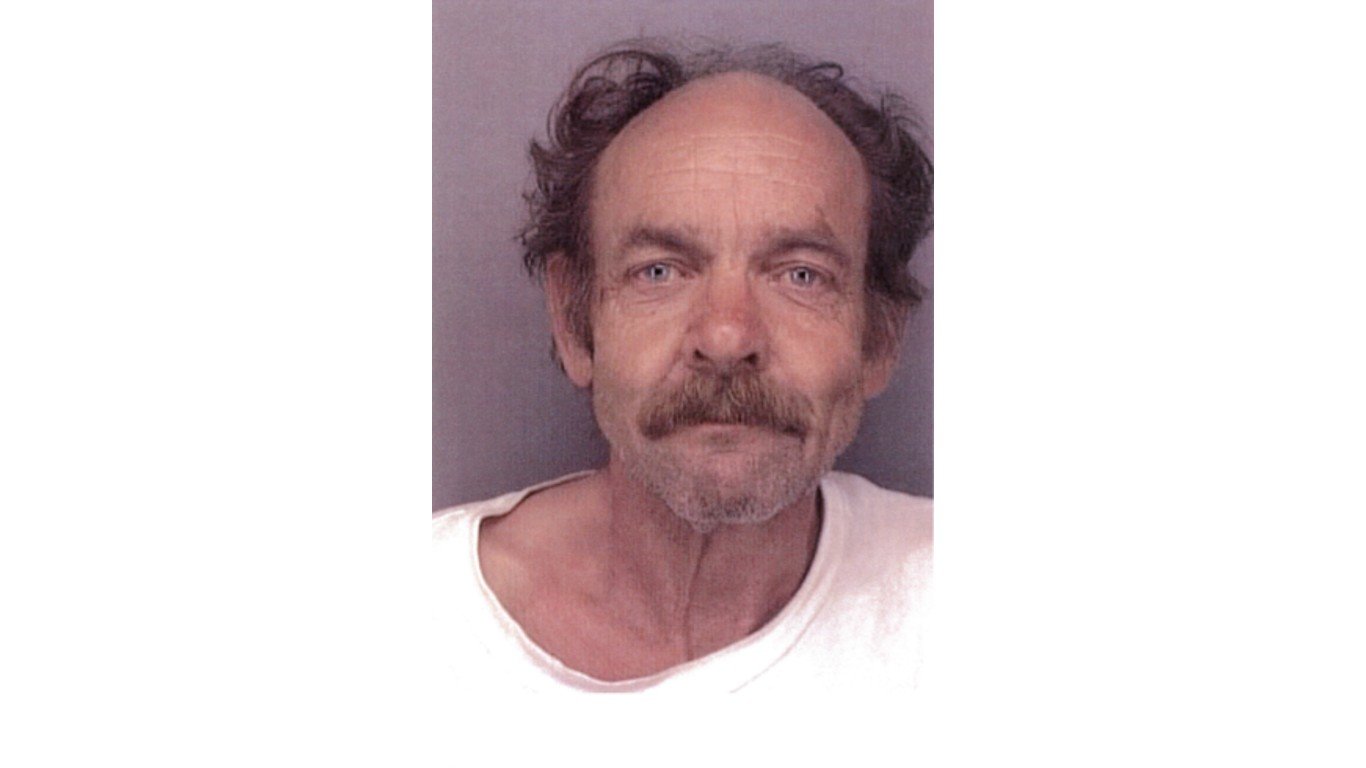
New Hampshire
> Crime: The Bear Brook murders between 1977 and 1981
The bodies of an adult woman and a younger girl were discovered in 1985 in a 55-gallon drum at Bear Brook State Park near Allenstown. In 2000, the remains of two more girls were found in the same place under similar circumstances. All four victims had died by blunt force trauma. Although suspicion fell on Terrence Peder Rasmussen, aka Bob Evans, the father of one of the victims, the case remains unsolved. Rasmussen, however, was convicted of killing a woman he married in 2001, and sentenced to 15 years to life. He died in prison in 2010.
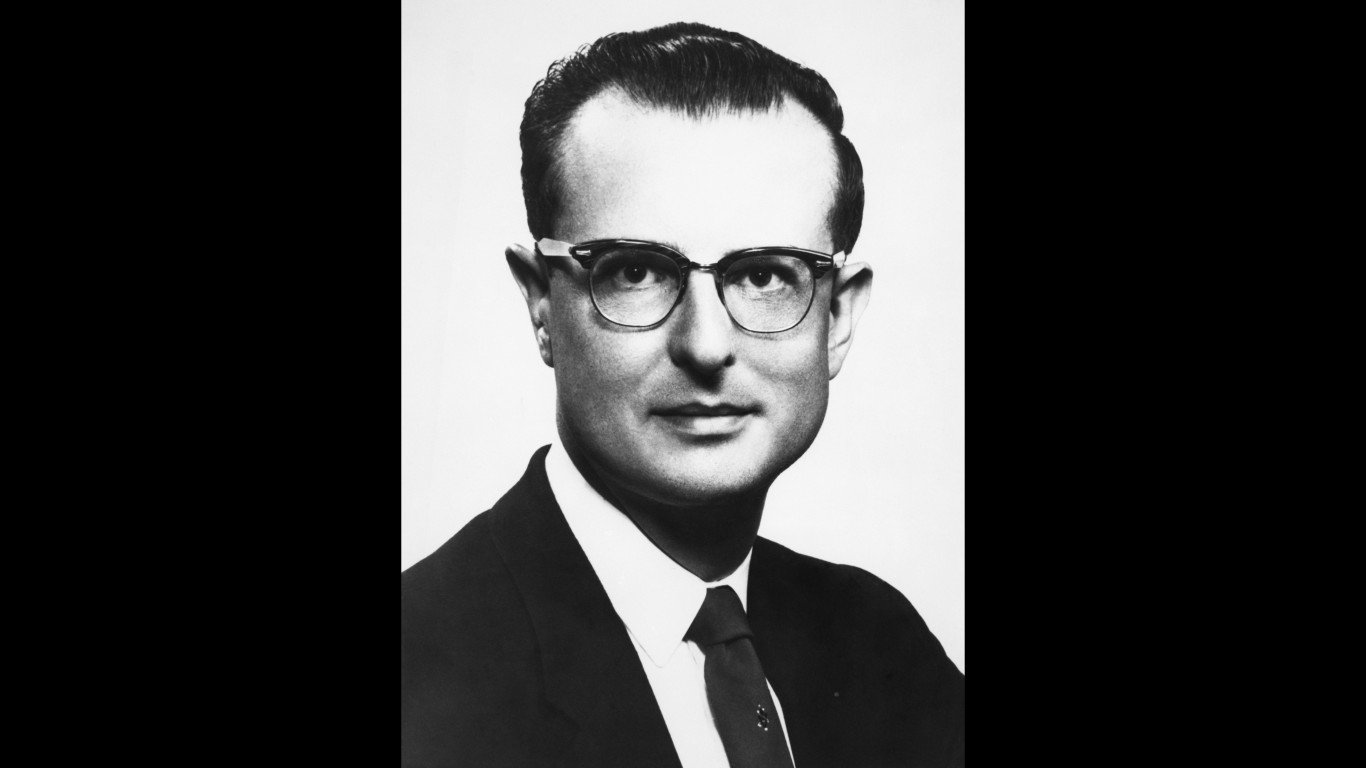
New Jersey
> Crime: John List killing his wife, mother, and three kids in 1971
Ashamed to tell his family that he’d lost his accounting job, John List murdered his mother, wife, and three children in Westfield. He wanted them to go to heaven, he later said. After the murders, he left for North Carolina with his savings bonds. To cover his tracks, he cut himself out of family photos. For 18 years, List got away with the crime, taking on a new identity and remarrying. But when a neighbor saw an image of what List would look like on “America’s Most Wanted,” he called the police. List was arrested and died in prison in 2008.
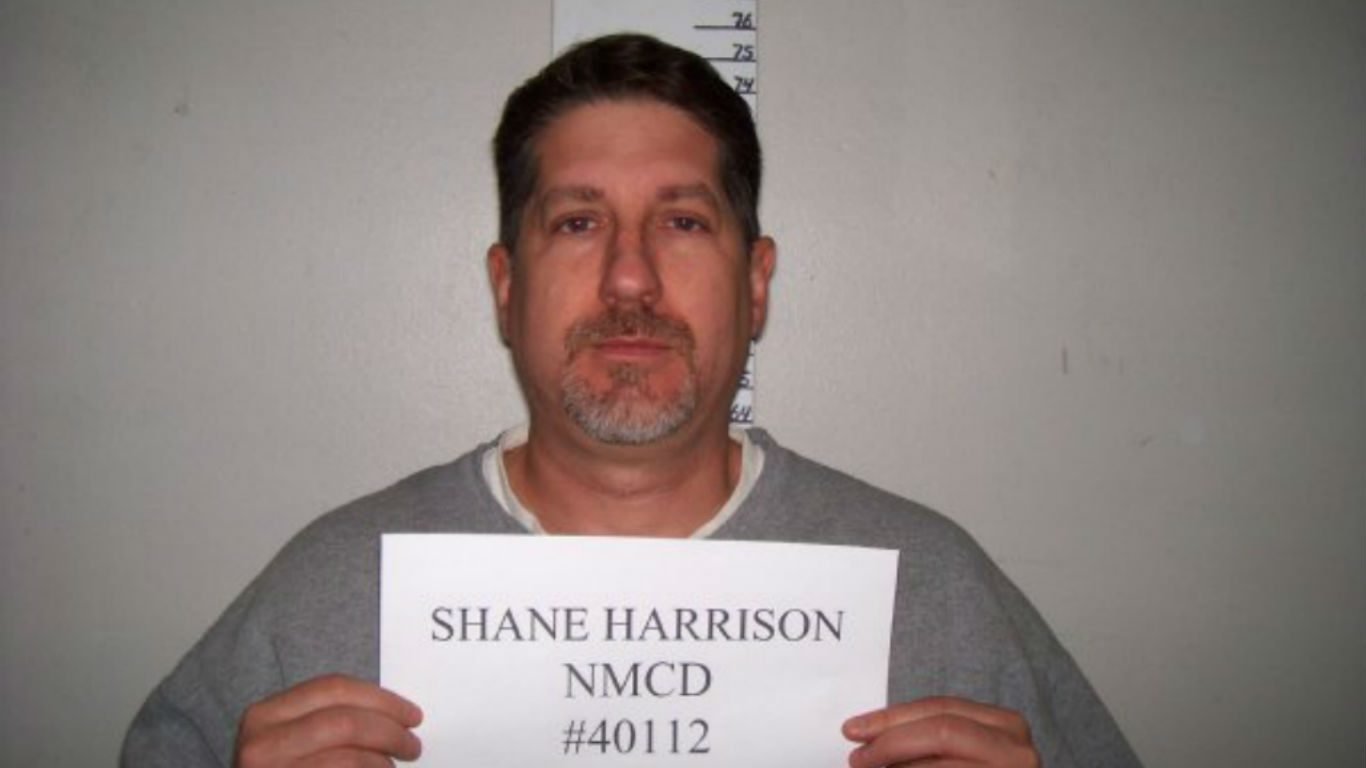
New Mexico
> Crime: Video store murders in Albuquerque in 1996
Albuquerque’s worst mass slaying occurred in 1996, when 28-year-old Shane Harrison shot and killed three employees of a Hollywood Video store in a botched robbery attempt. He then kidnapped and executed the grandparents of one of the victims. Harrison was convicted and sentenced to 258 years in prison for the murder of the grandparents, but the jury failed to come to a verdict on the other three killings.
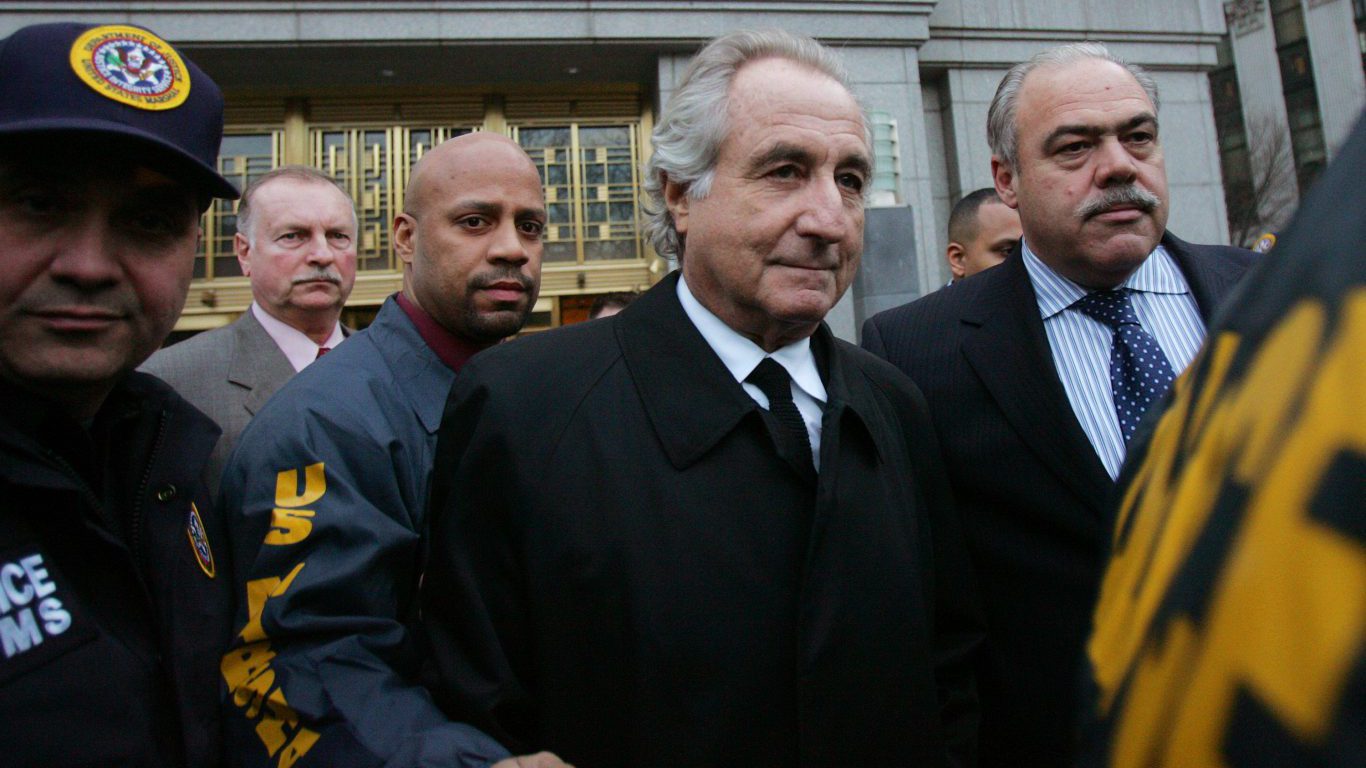
New York
> Crime: Bernie Madoff’s Ponzi scheme, defrauding thousands between the 1970s and 2008
New York has seen no shortage of horrific crimes over the years, but this one, though it involves no murders, stands out: For nearly three decades, Bernine Madoff ran the most elaborate Ponzi schemes in the nation’s history. All told, he swindled some $20 billion from clients, who included Steven Spielberg, actors Kevin Bacon and Kyra Sedgwick, and former New York Mets owner Fred Wilpon. Madoff died in prison at age 82 while serving a 150-year sentence for his crimes. The Department of Justice set up a fund to compensate victims, and last year, announced that it had distributed more than $4 billion to those who’d been cheated by Madoff.
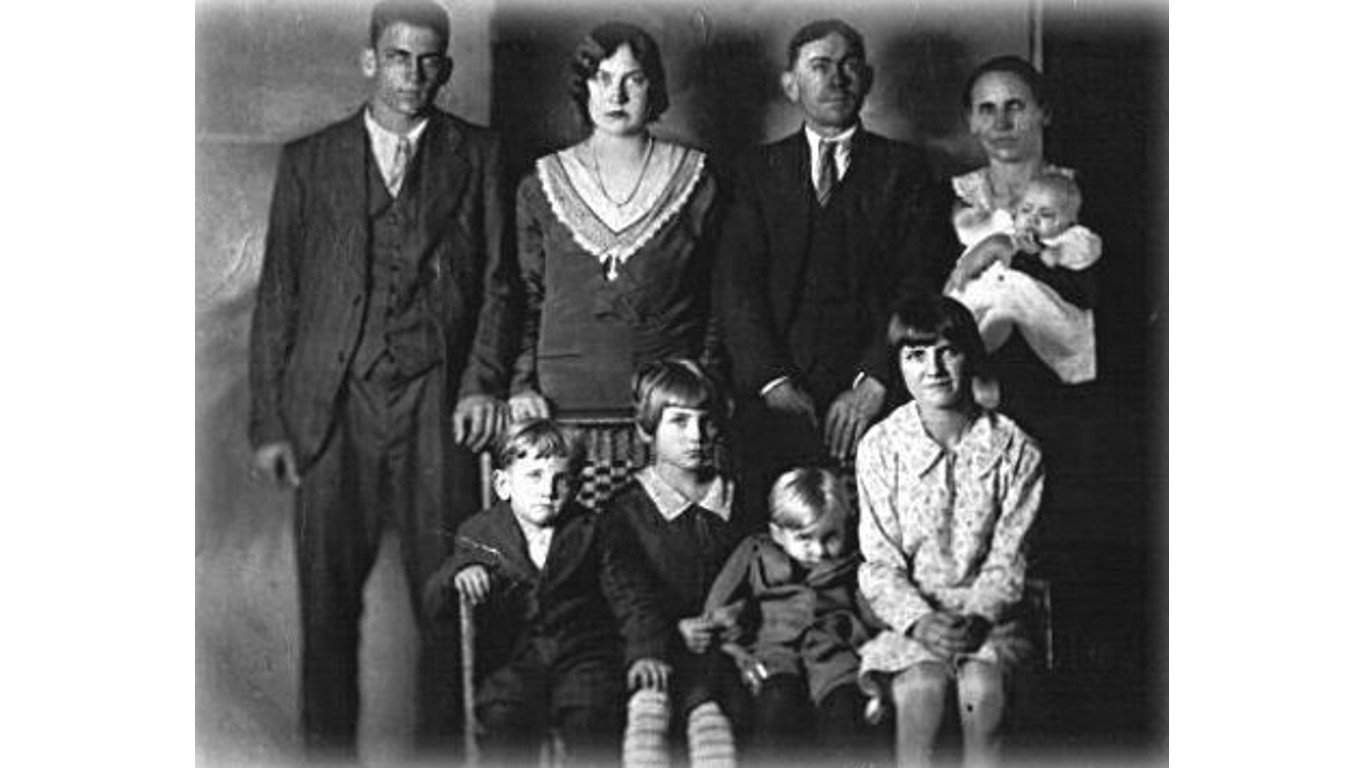
North Carolina
> Crime: The Christmas mass murders of the Lawson family in 1929
The holidays are a time of joy and celebration, but Christmas Day in Germanton, North Carolina, turned tragic when tobacco farmer Charlie Lawson murdered his wife and six of his seven children. (One son, 16-year-old Arthur, escaped with his life because he’d been sent on an errand.) Lawson killed himself, leaving unanswered his motive for the horrific slayings. After the murder, Lawson’s brother turned the murder house into a tourist attraction, displaying the raisin cake wife Marie had baked for Christmas dinner.
North Dakota
> Crime: The The Turtle Lake Murders in 1920
North Dakota was the site of a horrific familicide in 1920. Jacob Wolf and his family, plus the son of a neighbor who did chores for the family, were found either shot or bludgeoned to death on their Turtle Lake farm. Angered over an alleged attack on his cow by the Wolf family dog, neighbor Henry Lake admitted to killing the family. But he did leave an eight-month-old baby alive in her crib, explaining, “The reason I did not kill the baby was, I believe, because I did not go into the room in which the baby lay.” He died in prison.

Ohio
> Crime: Ariel Castro kidnappings and ‘House of Horror’ between 2002 and 2004
Three young women – Michelle Knight, Amanda Berry, and Gina DeJesus, ages 21, 16, and 14, respectively, at the time – accepted a ride from Ariel Castro. He then lured them to his home, where for years he imprisoned and sexually assaulted them, with Berry giving birth to a daughter. The women escaped when Berry broke through a fence and called 911. Castro was taken into custody, but hanged himself in his cell. His house of horrors was soon demolished.
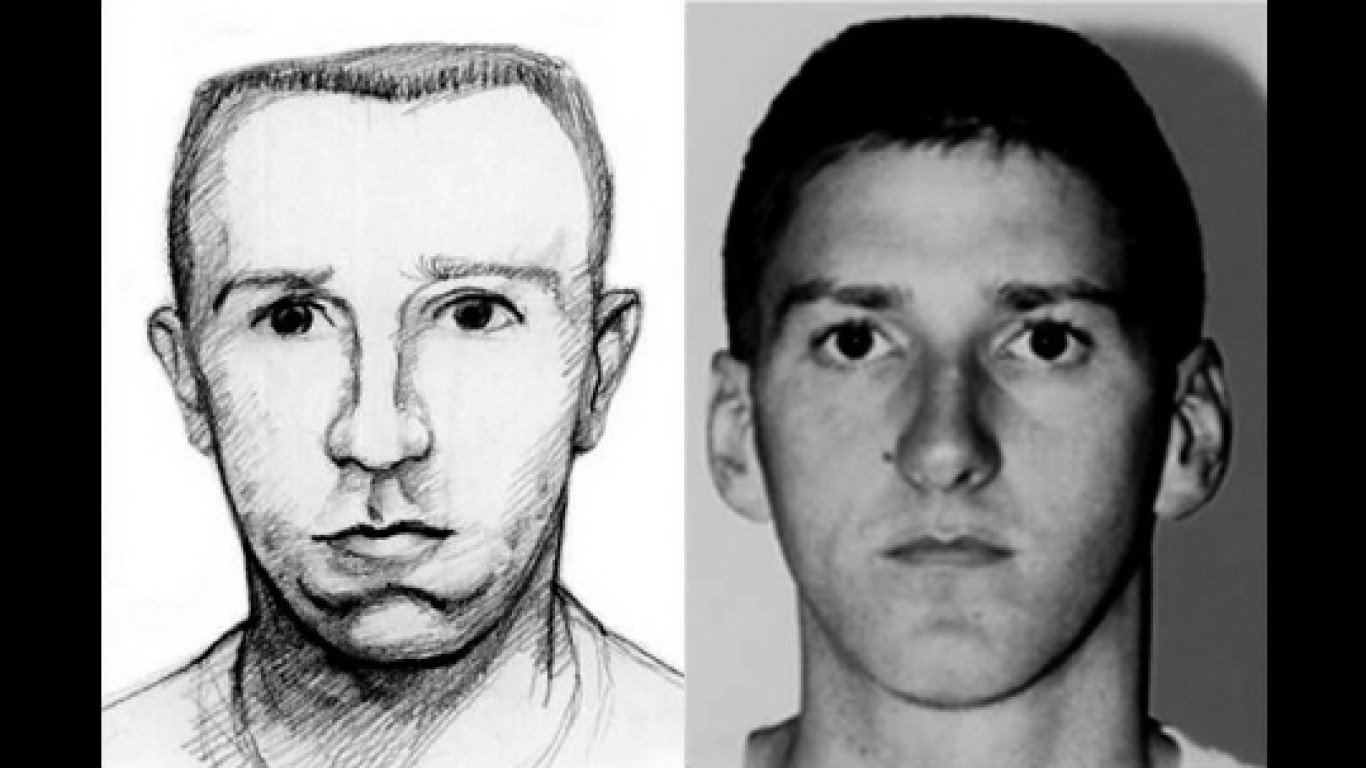
Oklahoma
> Crime: Oklahoma City bombing in 1994
Although Timothy McVeigh earned a Bronze Star from the Army for his service in the Persian Gulf, he later became disillusioned with the country. He took his revenge in the form of a bomb planted near the Alfred P. Murrah Federal Building in Oklahoma City. The explosion left 168 people dead, including 19 young children. McVeigh was executed in 2001 for his act of domestic terrorism.
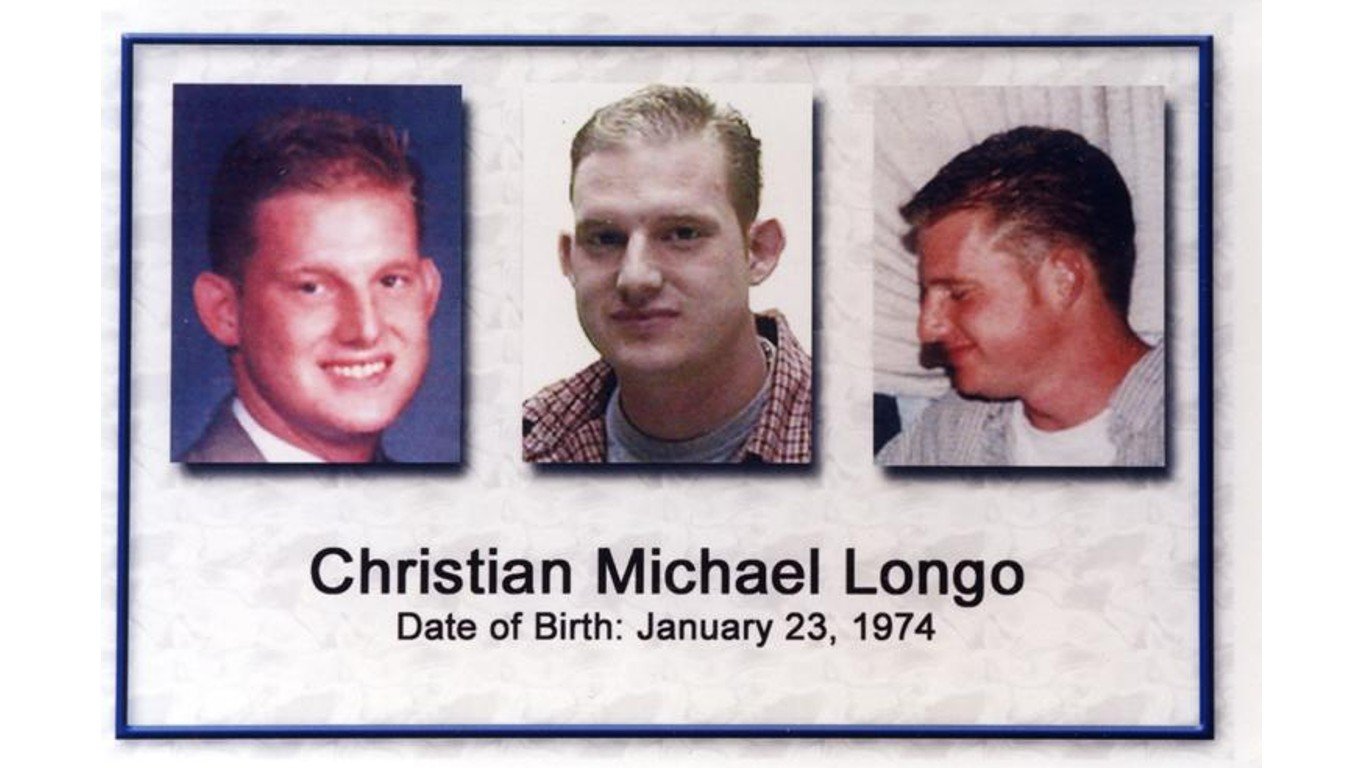
Oregon
> Crime: The Longo family murders in 2001
Mary Jane Longo and her three children were reported missing from their Ohio home. Soon after, the body of four-year-old Zachary Longo was found floating off the Oregon coast. The bodies of Mary Jane and two more of her children were later discovered in or near the water. Mary Jane’s husband, Christian Longo, remained missing and was almost immediately put on the FBI’s 10 Most Wanted List. Captured in Mexico using an alias, Longo said he committed the murders to escape mounting debt and the pressures of family life. Sentenced to death, Longo was the subject of a movie, “True Story,” starring James Franco. His death sentence was commuted to life in prison without possibility of parole in 2022.

Pennsylvania
> Crime: Jerry Sandusky sexually abusing boys for decades since the 1970s
Led by legendary coach Joe Paterno, Penn State rose to the heights of college football. But one the team’s coach, Jerry Sandusky, had been abusing young boys for years under the guise of helping them through his charity organization. He was charged with 45 counts of abuse in 2012 and is serving a 30- to 60-year sentence in a Pennsylvania prison. He always maintained his innocence, saying he only showered with the young boys. Shaken by the scandal, Paterno died in 2012.
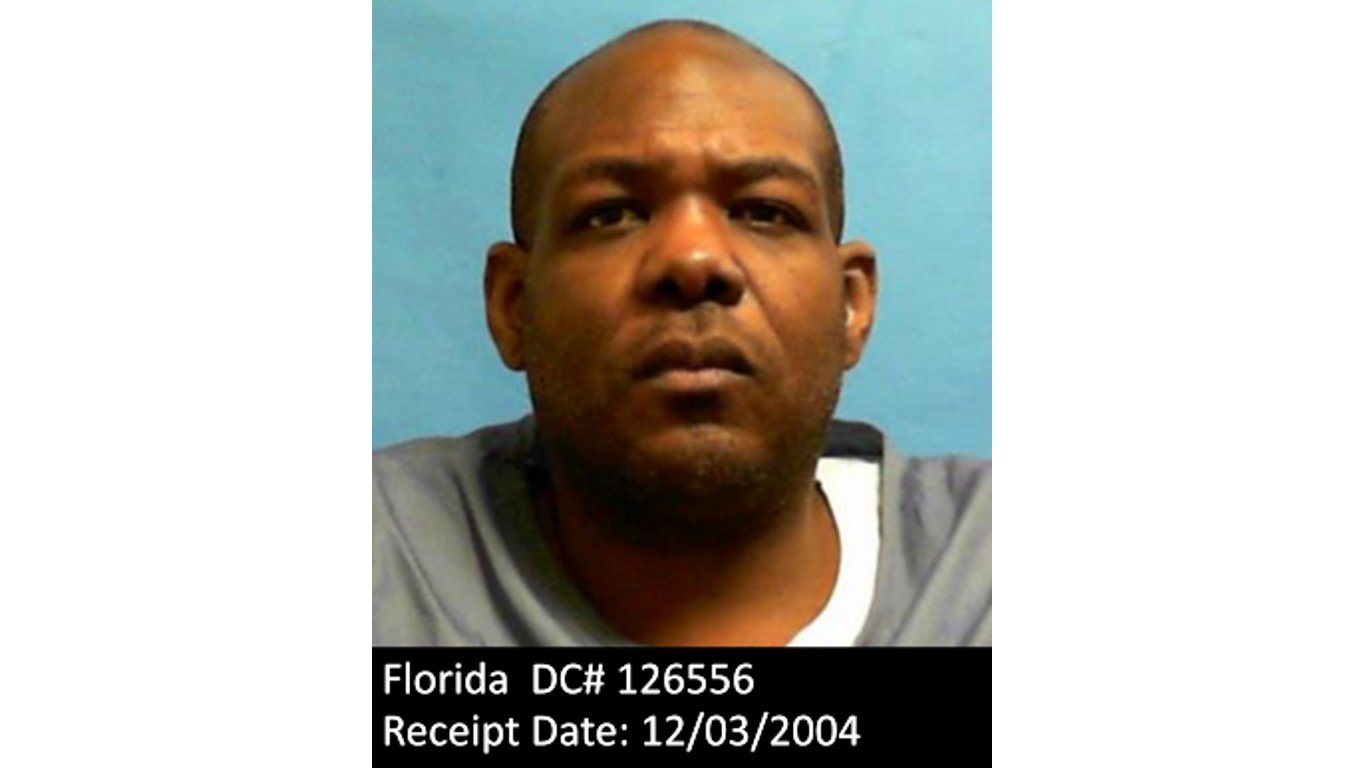
Rhode Island
> Crime: The Warwick Slasher’s murders between 1987 and 1989
The youngest serial killer in history, Craig Price stabbed two women and two young girls to death when he was between the ages of 13 and 15 – supposedly in belated reaction to racial slurs hurled at him when he was a child. Tried and convicted as a minor, he would have been eligible for release at age 21. However, he got involved in violent prison fights which extended his term. Scheduled for release in 2022, Price stabbed another inmate with a homemade knife in 2017 and was sentenced to another 25 years for the attack.
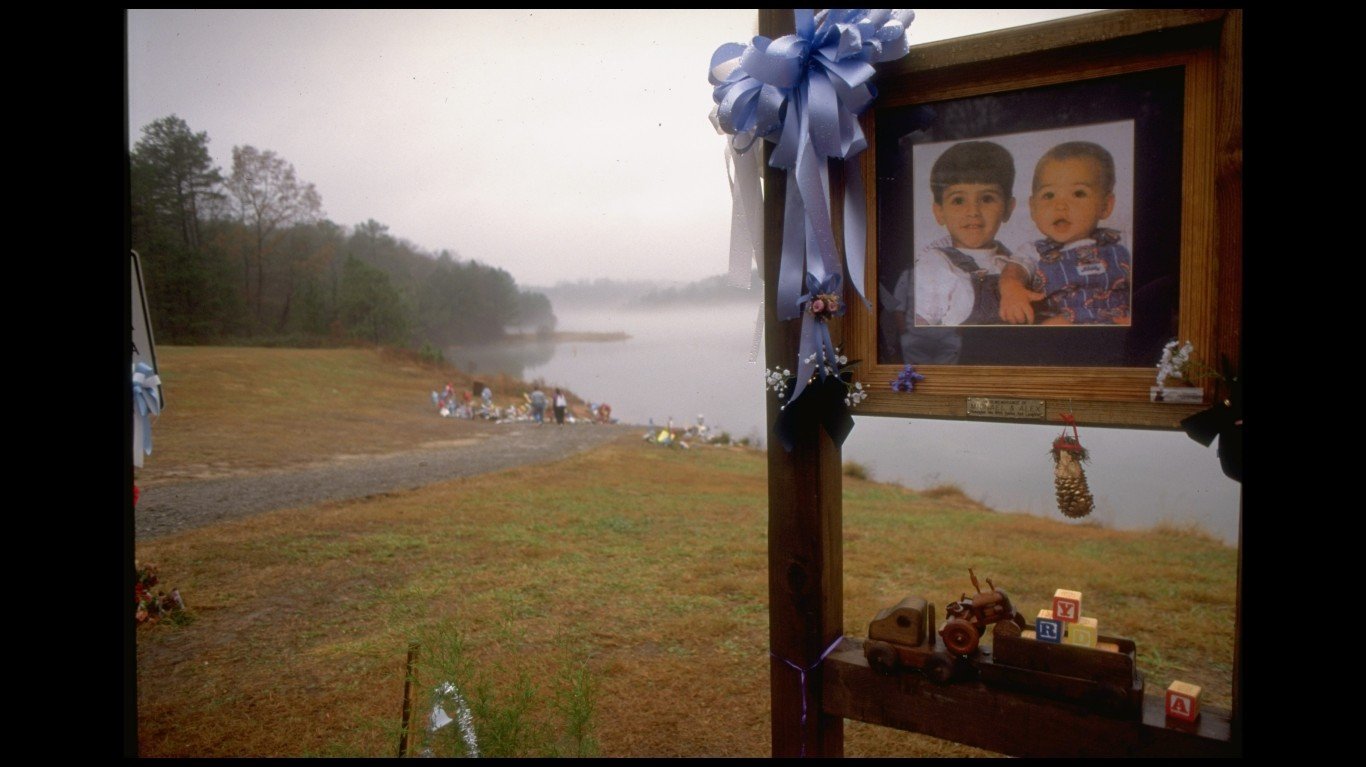
South Carolina
> Crime: South Carolina mom killing her two toddlers in 1994
Susan Smith strapped her two toddler sons into their car seats in her Mazda and pushed the car into a lake, where the two boys died. She later claimed the children had been abducted by a “strange man” but her story unraveled, and Smith was convicted of two counts of murder and sentenced to life in prison. She is eligible for parole in 2024. Her only explanation was that she wasn’t in her right mind at the time and didn’t plan the murders.

South Dakota
> Crime: Robert Leroy Anderson’s sadistic murders between 1994 and 1996
Robert Leroy Anderson was convicted and sentenced to death for the kidnapping and killing Larisa Dumansky of Sioux Falls in 1994 and Piper Streyle of rural Canistota in 1996. A third victim, Amy Anderson, fled before she was murdered. Authorities believe Anderson had committed even more crimes as a serial killer. He killed himself on death row in 2003 before he could be executed.
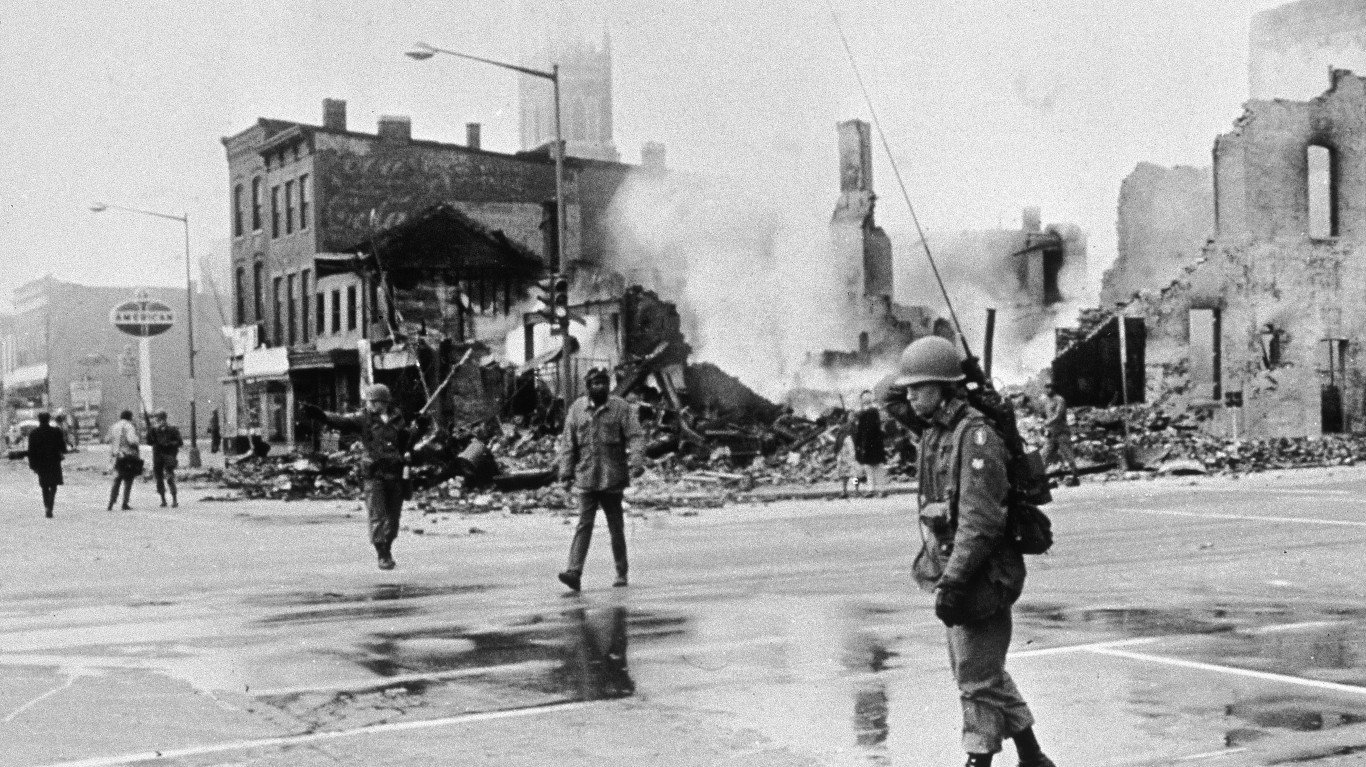
Tennessee
> Crime: Assassination of Martin Luther King Jr. in 1968
Civil Rights icon Martin Luther King, Jr. was in Memphis in support of striking sanitation workers. At the speech on April 3, he seemed to hint at the probability of not living a long life, saying, “I’ve seen the promised land. I may not get there with you. But I want you to know tonight, that we, as a people, will get to the promised land.” The next day King was assassinated by James Earl Ray as he stood on his balcony at the Lorraine Hotel. The act set off race riots across the country, but was a pivotal moment in advancing the cause of equal rights.
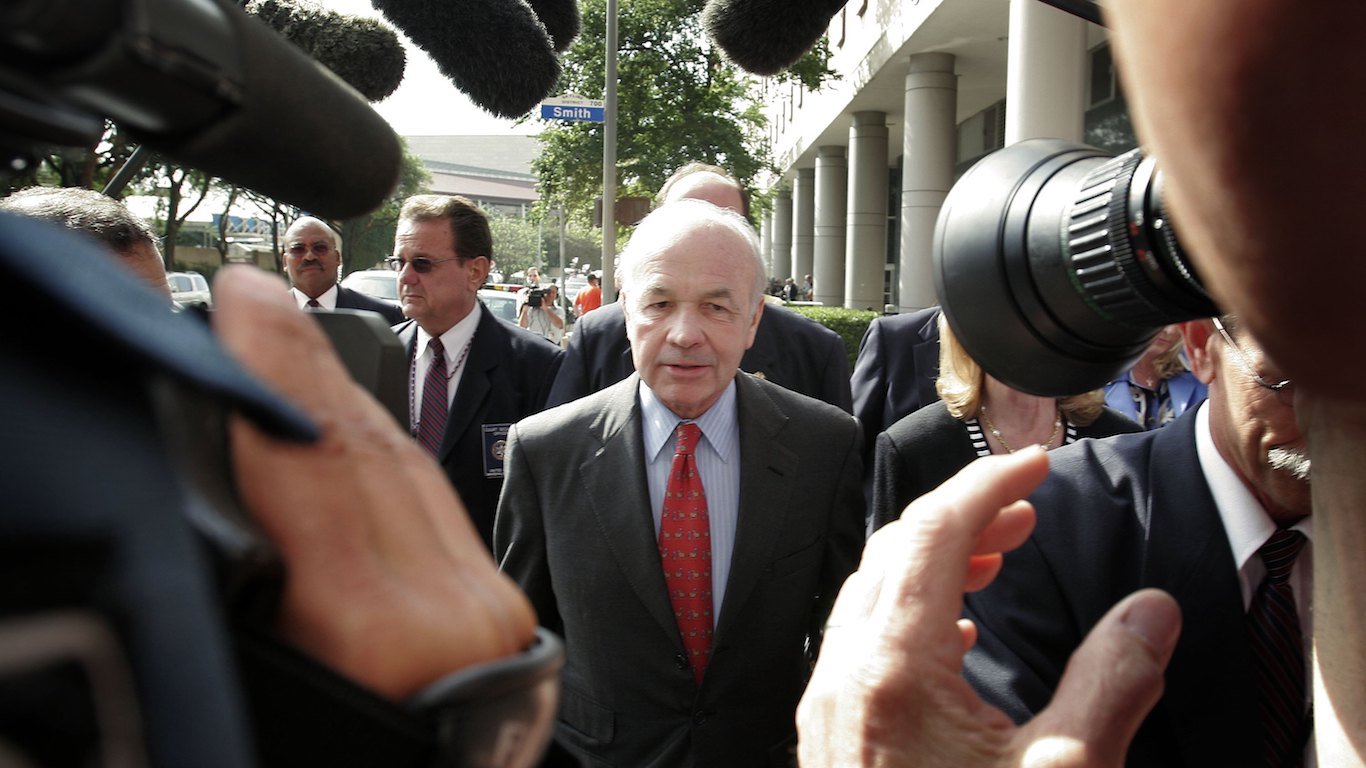
Texas
> Crime: The Enron scandal of 2001
When Enron went belly-up in 2001, fingers began to be pointed at CEO Kenneth Lay. It was later learned Lay’s sell-off of $300 million in stocks and other sketchy deals over a decade drove the company into what was then the country’s largest bankruptcy. The crash caused millions of dollars of losses for investors. The savings of former employees were also wiped out. Indicted on 11 counts of securities fraud, wire fraud, and making false and misleading statements, Lay died before sentencing.
Utah
> Crime: Elizabeth Smart kidnapping in 2002
Elizabeth Smart was 14 years old and getting ready to graduate from middle school when Brian David Mitchell and his wife, Wanda Barzee, kidnapped her and held her hostage for nearly a year. After she was found, Smart detailed horror stories of rape and being forced to drink alcohol and watch pornography. Mitchell was found guilty and sentenced to life in prison. Barzee was released from prison in 2018 with the stipulation that she register as a sex offender. Smart has since become a vocal advocate for child abuse victims through her Elizabeth Smart Foundation.

Vermont
> Crime: Unsolved East Middlebury murders in 1935
As a mother and daughter walked in the woods in 1935, they came upon a skull. Further examination revealed the bodies of a woman and two young boys, probably her sons. Forensic science was still in its infancy so all investigators could decipher was that all three had been shot in the head. The crimes remain unsolved to this day.

Virginia
> Crime: Virginia Tech shooting in 2007
A quiet day at Virginia Tech was shattered when Korean-born Seung-Hui Cho shot and killed 32 people on campus. At the time, it was the worst mass murder on a college campus since the Texas Tower shooting at the University of Texas in Austin in 1966. A letter Cho mailed before the crime referenced the Columbine school shooters, Dylan Klebold and Eric Harris. Cho killed himself before he could be taken into custody.
Washington
> Crime: Ted Bundy murder spree in 1970s and 1980s
Charming Ted Bundy hid a vicious secret: While living in Washington state, he would abduct, rape, and murder women. He often took their corpses back to his apartment. Although Bundy became a suspect in the 1970s, he was dismissed by authorities because of his clean-cut appearance. He was arrested in 1975 and 1977, but escaped both times. Finally, after Bundy was arrested for a traffic violation on Feb. 15, 1978, he was tried for his crimes, sentenced to death, and executed in the electric chair in 1989. Although he confessed to 30 murders, Bundy may have committed many more crimes.
West Virginia
> Crime: Murder of Skylar Neese in 2012
Sixteen-year-old Skylar Neese from Star City thought she was going on a joyride after midnight with her best friends, Sheila Eddy and Rachel Shoaf, when she snuck out her bedroom window in Star City. When she didn’t come home, it was initially assumed that she was a runaway. When police began interviewing Neese’s schoolmates, though, Shoaf confessed, saying that she and Eddy had decided that they no longer wanted to be friends with Neese and so they killed her, dumping her body in the Pennsylvania woods. Shoaf and Eddy are currently in prison.

Wisconsin
> Crime: Jeffrey Dahmer crimes between 1978 and 1991
Jeffrey Dahmer cruised gay bars, malls, and bus stops, looking for men and boys he could lure to his home with promises of sex or money. But the men, mostly African-American, were strangled to death instead. Dahmer kept grisly reminders of his victims, such as skulls, and in some later cases ate some of their flesh or had sex with their dead bodies. All told, Dahmer killed 17 men and boys. Sentenced to 16 life terms, Dahmer was killed by another inmate in 1995.
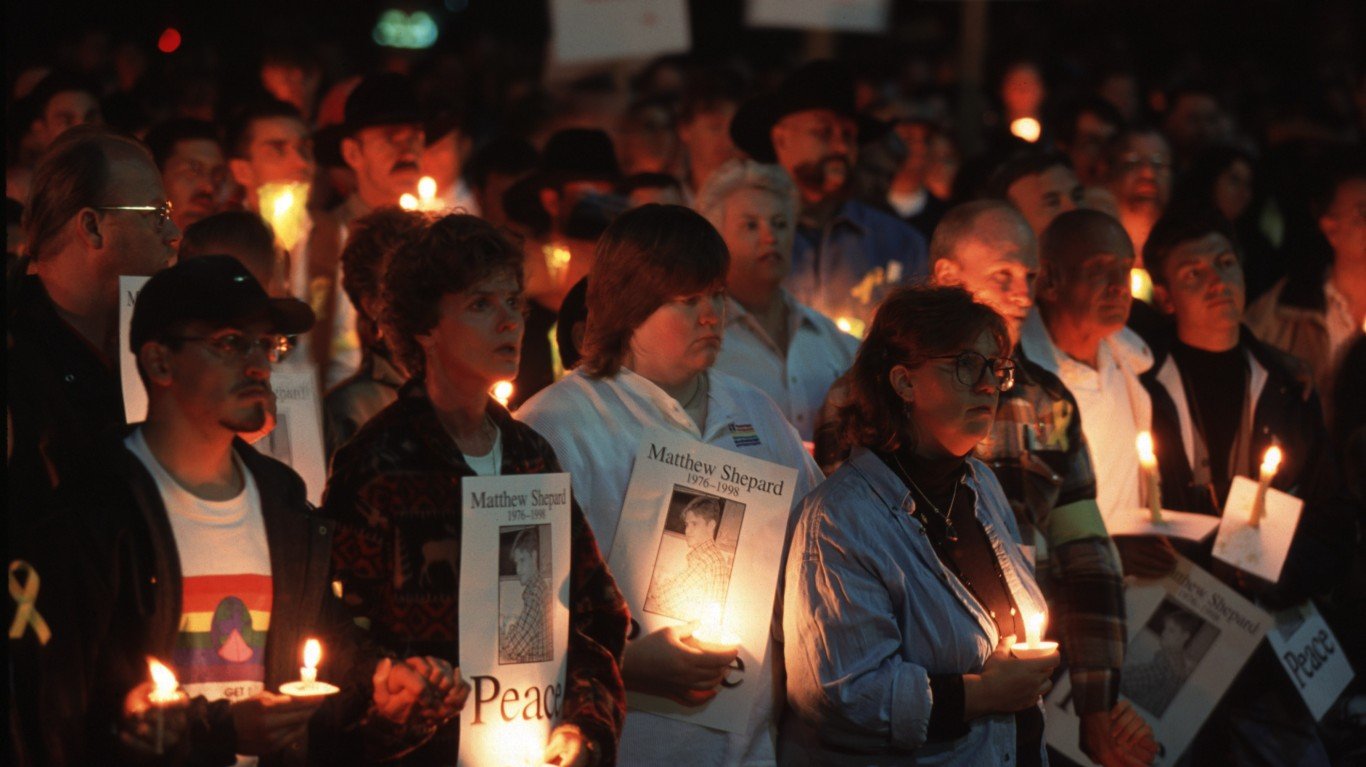
Wyoming
> Crime: Murder of gay student Matthew Shepard in 1998
When openly gay student Matthew Shepard walked into a bar in Laramie, he chatted up two patrons, Russell Henderson and Aaron McKinney. Rather than seeing him as a new friend, the two men hatched a plan to kill the 21-year-old slightly built Shepard. After driving out of town with him, the two brutally beat Shepard and tied him to a fence in the frigid cold. He died five days after he was discovered with four skull fractures and a crushed brain stem. Henderson and McKinney are serving two consecutive life terms for kidnapping and murder in what authorities believe was a hate crime against gay people. Although tragic, Shepard’s murder propelled the LGBTQ rights movement into national prominence.
